Dorogie druzya! (Dear friends!)
As we reach the mid-point in our program, I am happy to report that the students continue to make impressive progress in their language and cultural studies. This week, students have enjoyed field trips, sung songs, acted out dialogs, participated in conversation clubs, and explored Moscow with their host families. Here are some photos of our activities.
On Saturday, the students and I enjoyed a four-hour excursion by bus around Moscow. We stopped at several famous sights to explore and take pictures. We started near Red Square.
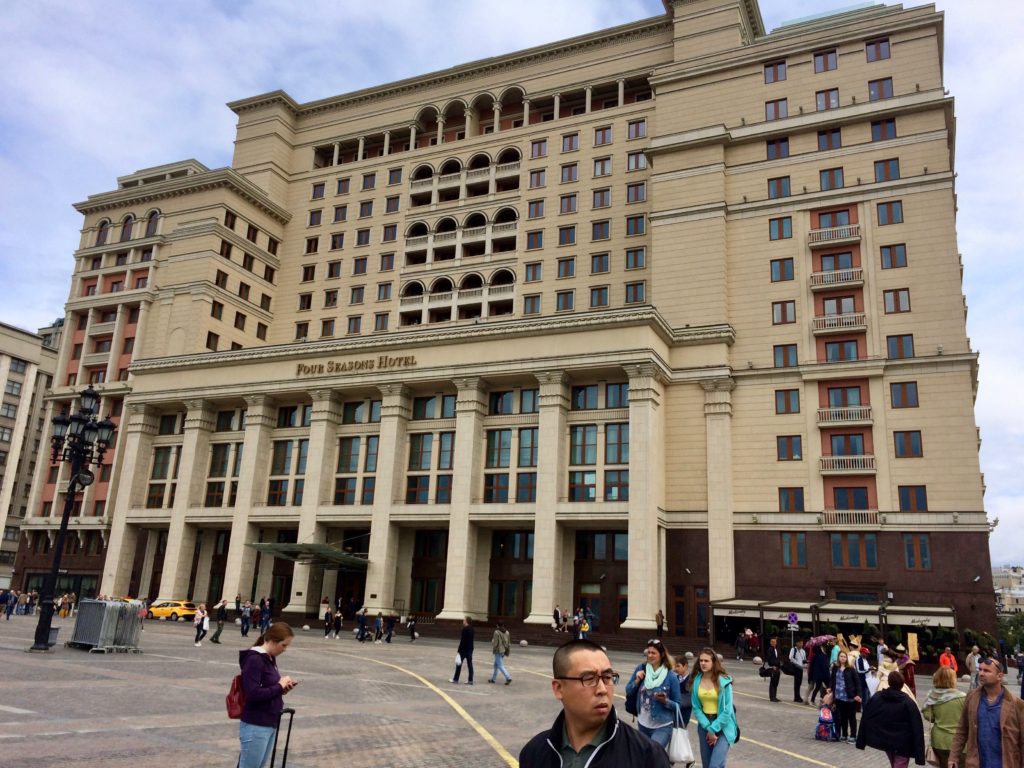
The Four Seasons Hotel Moscow, just north of Red Square. The hotel opened in 2014 with a facade that replicated the historic Hotel Moskva, which stood on the same site. The original hotel, constructed in the 1930’s, was notable for its use of two different designs for the wings on either side of the central structure. The most popular explanation for this discrepancy in design—though perhaps an urban legend—is that the architect submitted a single drawing to Stalin for approval, with one half showing one design for the wings of the building and the other half showing a different design. Stalin placed his signature exactly in the middle of the drawing, likely not observing that there was a choice to be made. Afraid of informing Stalin that he had failed to select a design, the decision was made to construct the hotel per the drawing that Stalin approved. The original Hotel Moskva was demolished in 2004 and replaced with a modern reproduction, with underground parking and other amenities not available in the 1930’s. The hotel, on the site of the 1935 building, replicates the iconic facade, following the architect’s exterior plans as accurately as possible.
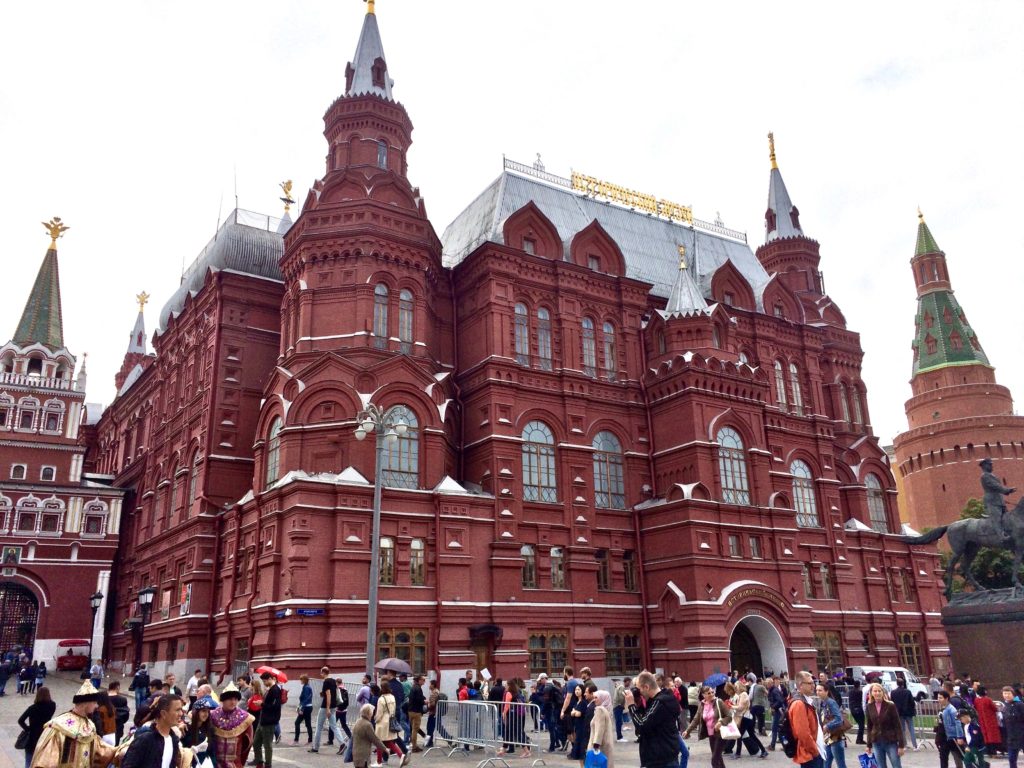
Adjacent to the Four Seasons Hotel stands the State Historical Museum, the largest national museum of Russia. The museum was founded in 1872, and the current red brick building was completed in 1881. The first eleven exhibit halls officially opened in 1883 during a visit from Tsar Alexander III and his wife. In 1894, the tsar—Anastasia’s grandfather, for you movie fans—became the honorary president of the museum. The following year, the museum was renamed the Tsar Alexander III Imperial Russian History Museum. Notable items in the museum’s collection include a longboat excavated from the banks of the Volga River, gold artifacts of the Scythians, birch-bark scrolls of Novgorod, manuscripts going back to the sixth century, Russian folk ceramics, and wooden objects.
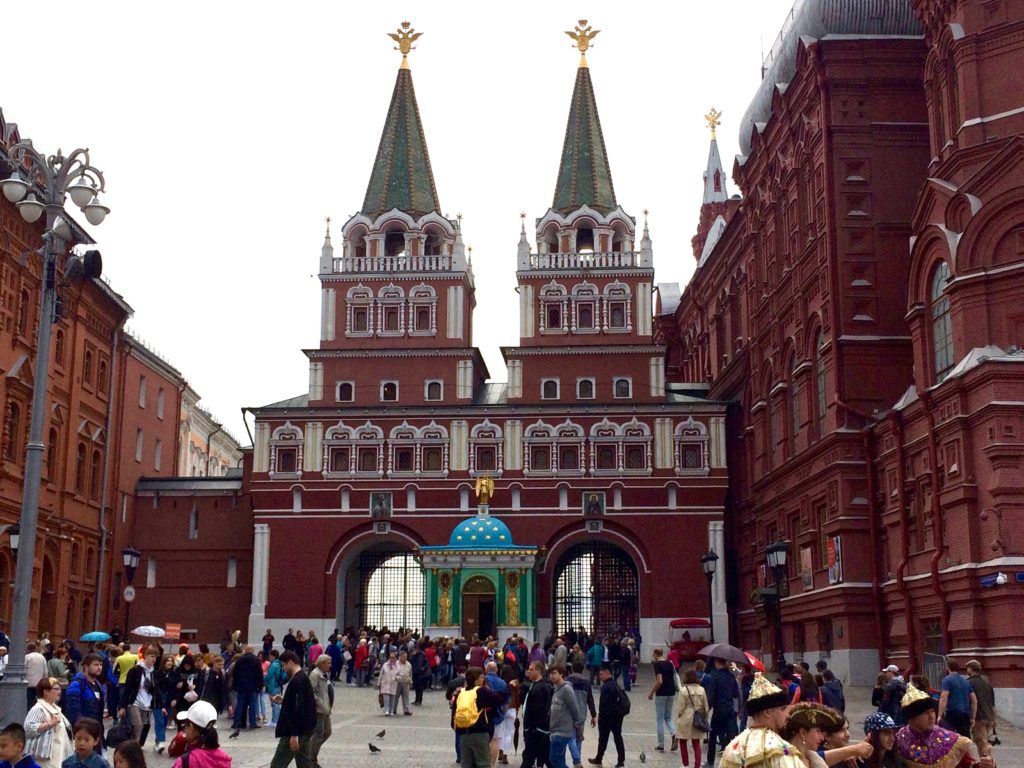
Next to the State Historical Museum is the Resurrection Gate. The gate adjoins the ornate building of the Moscow City Hall to the east (to the left of the photo) and the State Historical Museum to the west. Just in front of the chapel is a bronze plaque marking kilometer zero of the Russian highway system. The Resurrection Gate dates to 1535 and was rebuilt in 1680. If you look closely at the gate, you’ll notice a small chapel located in the center. A chapel has stood at this site since 1669. In 1781, a brick chapel replaced the wooden one that stood here. The blue cupola with gold stars is topped with a statue of an angel bearing a cross. For centuries, those going to Red Square or the Kremlin visited the chapel to pay homage at the shrine before entering through the gate.
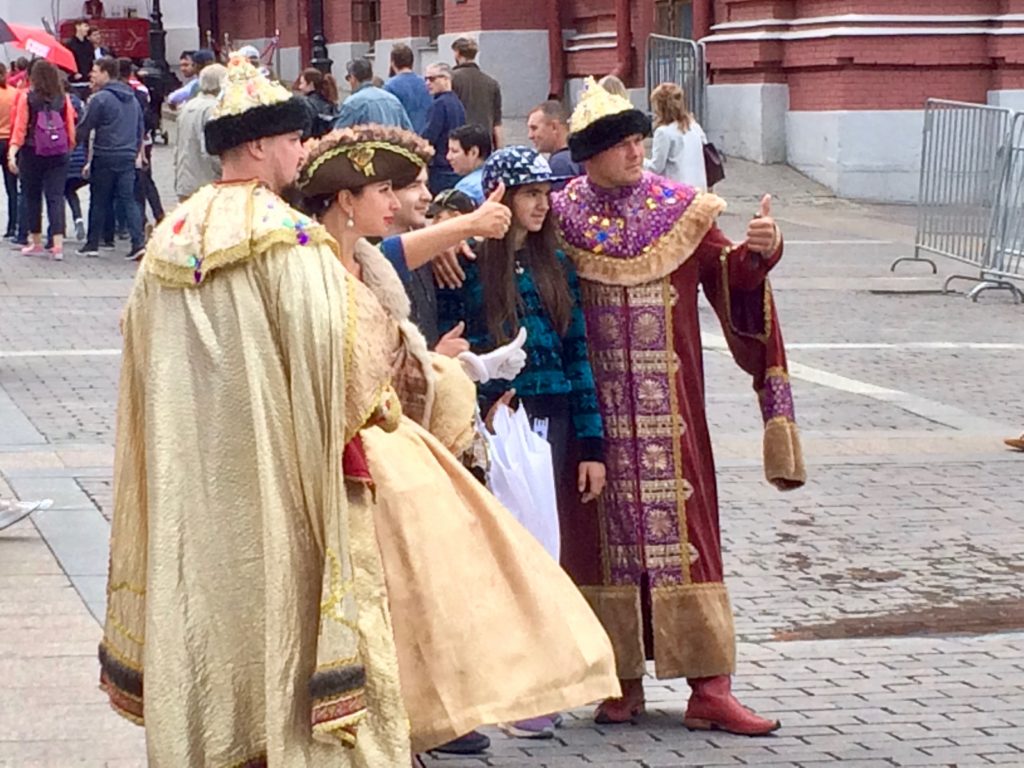
For a small fee, you can have your photo taken with people dressed in period costumes.
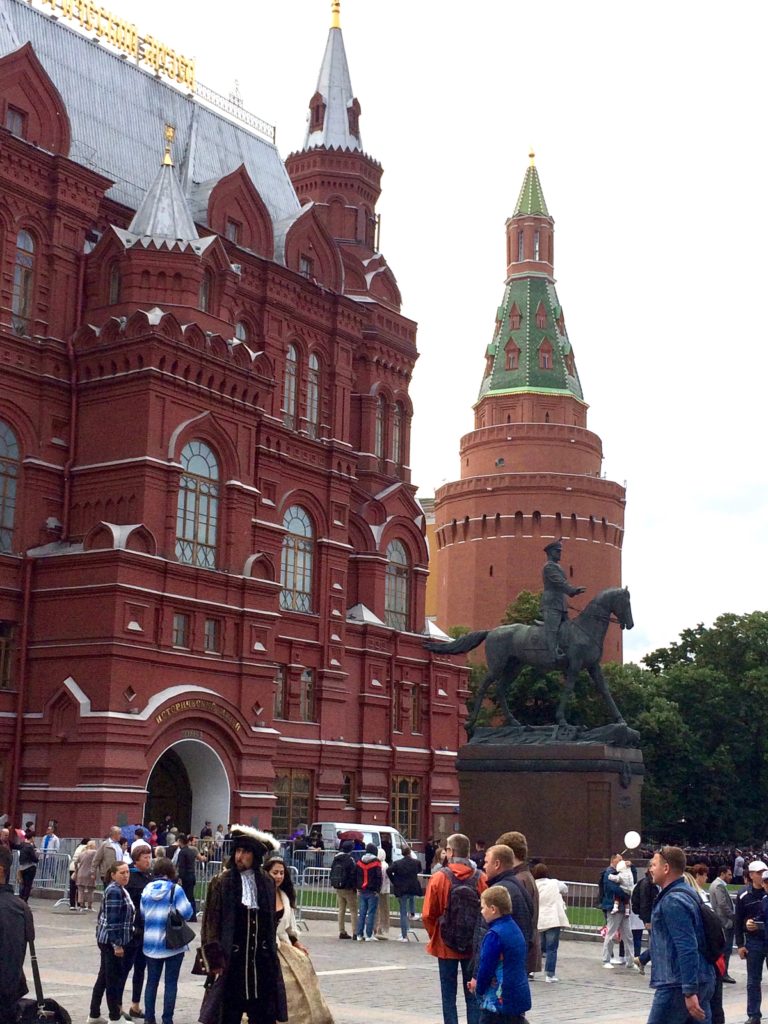
In front of the Historical Museum stands a monument to Georgy Zhukov, Marshal of the Soviet Union and one of the most famous military leaders of any country during the Second World War. In the background of the picture is the Corner Arsenal Tower (1492) of the Kremlin.
Our next stop was the Patriarshy (“Patriarchal”) Bridge, a steel pedestrian bridge spanning the Moskva River and Vodootvodny Canal. Below are views from the bridge.
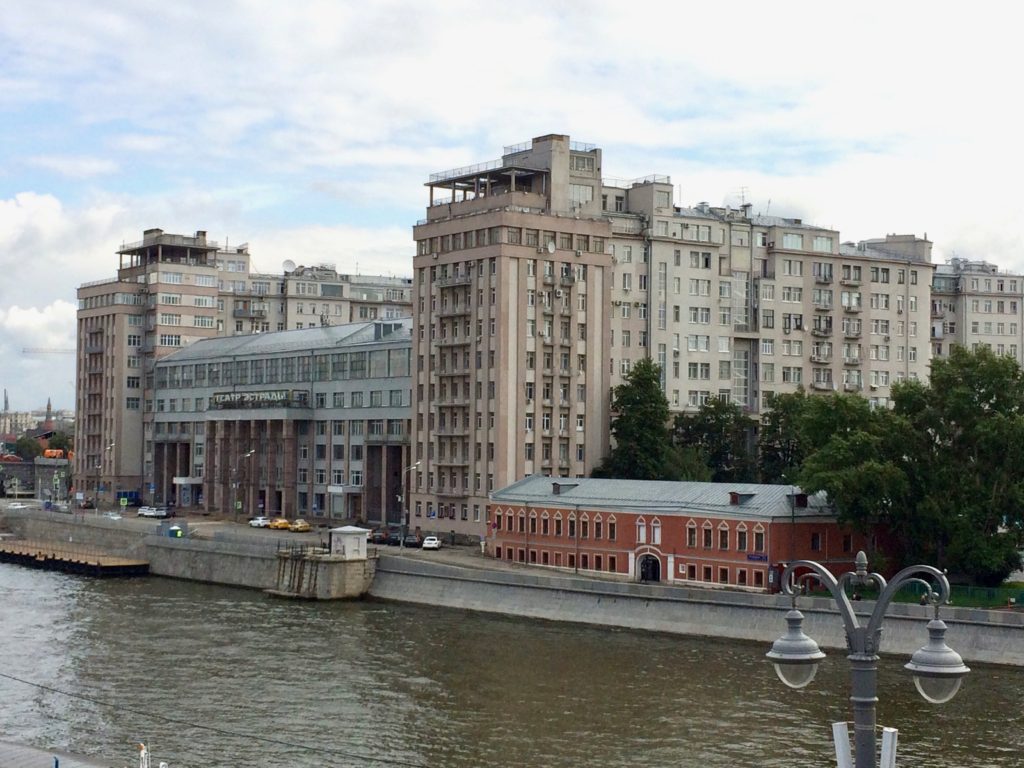
This immense building is the famous House on the Embankment, a block-wide apartment building overlooking the Moskva River. It was completed in 1931 as the Government Building, a residence for the Soviet elite. The building is considered to be constructivist in style. The apartments were luxurious for their time; telephones, central heating and high ceilings were standard. The building also featured a gymnasium, tennis court, kindergarten, library, and laundry facilities.
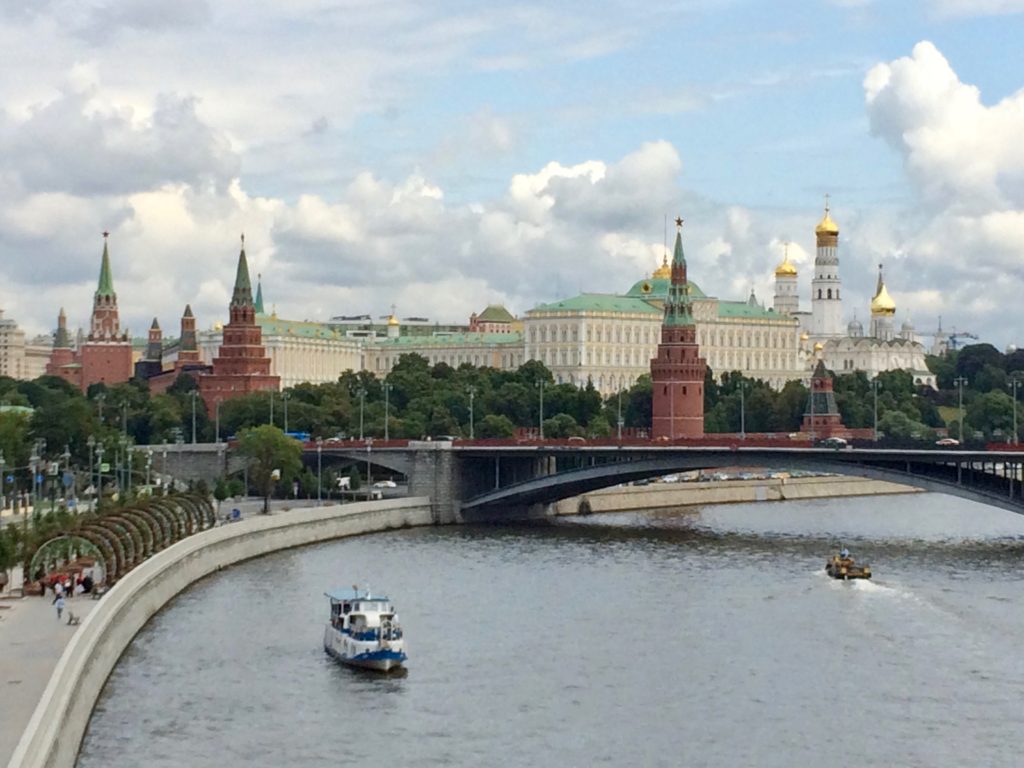
A view of the Kremlin from the bridge. The big yellow palace with the green roof is the Great Kremlin Palace, the Moscow residence of the Russian tsars. It was built in 1849 by the same architect who designed the Kremlin Armory and the Cathedral of Christ the Savior. With over 700 rooms, the buildings of the Palace form a rectangle with an inner courtyard. The building appears to have three stories but actually has two; the upper floor has two sets of windows.
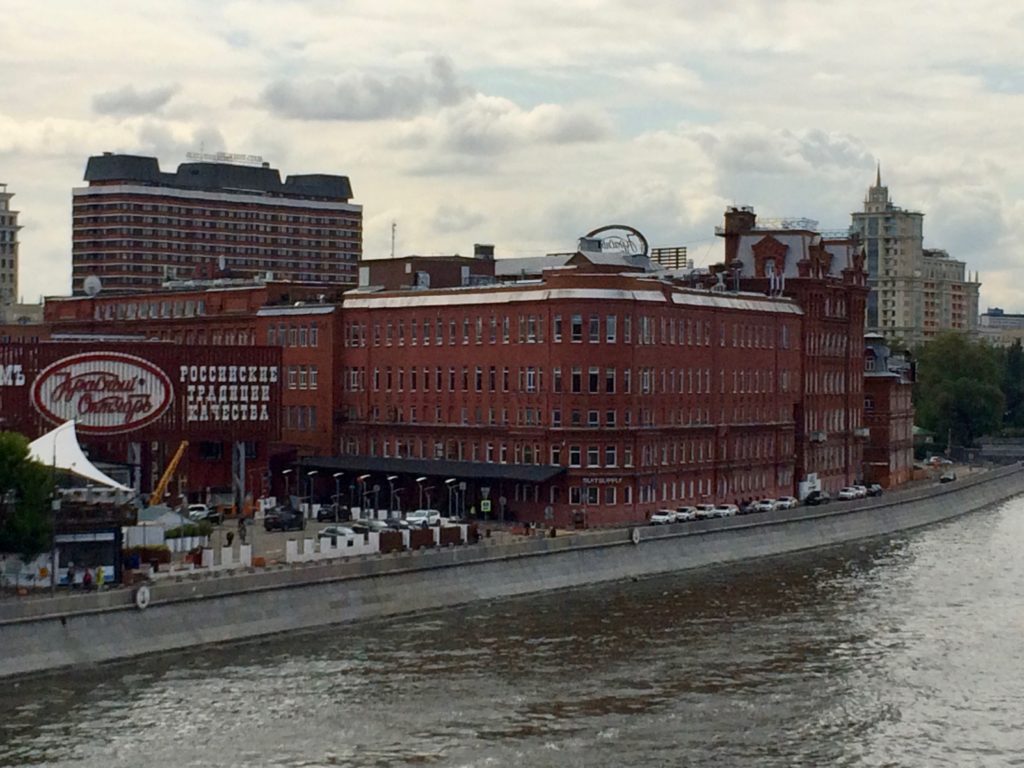
A view from the bridge in the other direction. This iconic red building is the former factory of the Red October candy company. The company, founded in the 1870’s, was called Einem, after the name of its founder. After the October Revolution of 1917, the company was nationalized and given its current name: Red October. Below is an image of the “Alyonka” chocolate bar, one of the most famous chocolate bars made by the Red October factory. The wrapper depicts a blue-eyed girl wearing a traditional Russian head scarf, who is presumably “Alyonka,” an endearing form of the name Alyona. In 2007, the plant was relocated to the outskirts of Moscow, and the famous red brick building was redeveloped into apartment complexes, cafes, and restaurants.
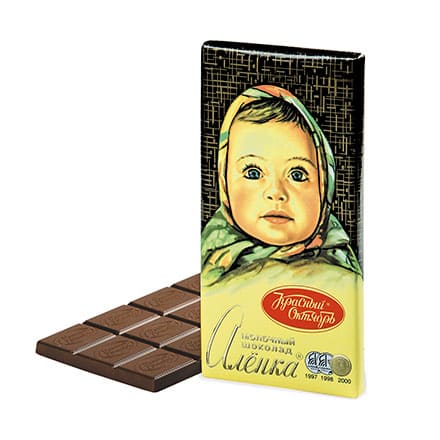
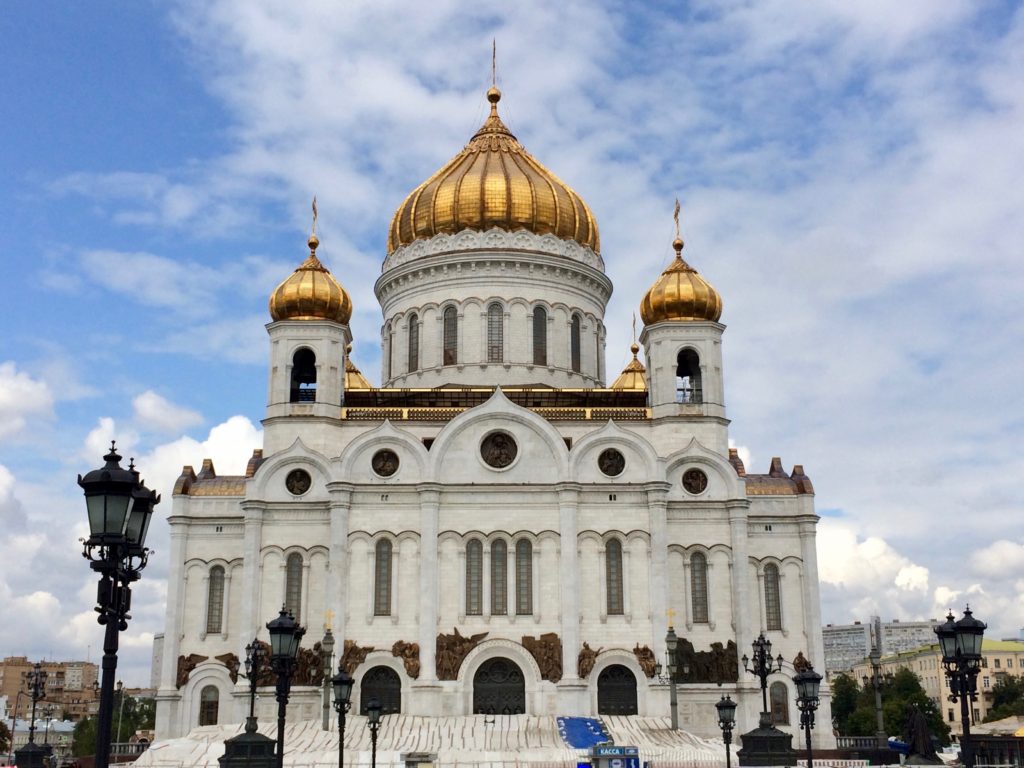
After enjoying the views from the bridge, we visited the Cathedral of Christ the Savior, the tallest Orthodox church in the world and the second largest Orthodox church in Russia (after St. Isaac’s Cathedral in St. Petersburg, which currently functions as a museum). The current Cathedral is the second to stand on this site. The original Cathedral, built in the 19th century, was destroyed in 1931 per the orders of Joseph Stalin. The demolition was supposed to make way for a colossal Palace of the Soviets to house the government’s legislature, the Supreme Soviet of the USSR. (A soviet is an elected council.) Construction began in 1937 but was halted in 1941 when Germany invaded the Soviet Union. Its steel frame was disassembled the following year, and the Palace was never built. Following the dissolution of the Soviet Union in 1991, the church was rebuilt on the same site.
After leaving the cathedral, we headed for our last stop, the overlook at Sparrow Hills (formerly known as Lenin Hills). Moscow is a relatively flat city, so there are few places to enjoy a panoramic view of the metropolis. Here are two photos of the city from Sparrow Hills, located to the southwest of downtown.
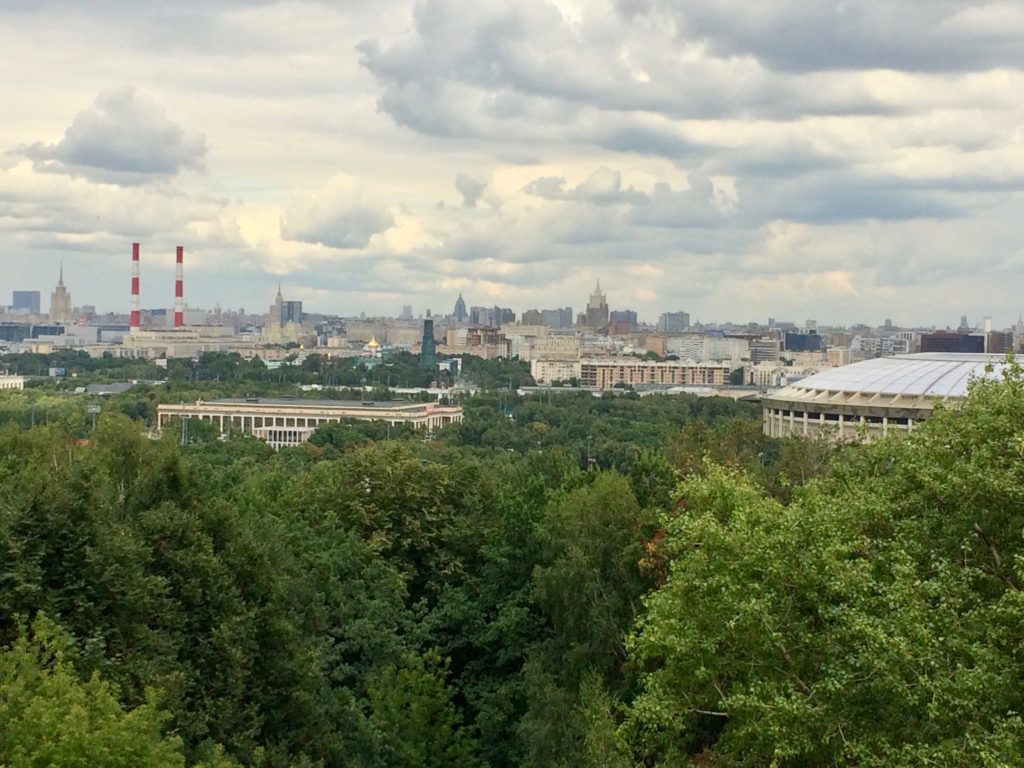
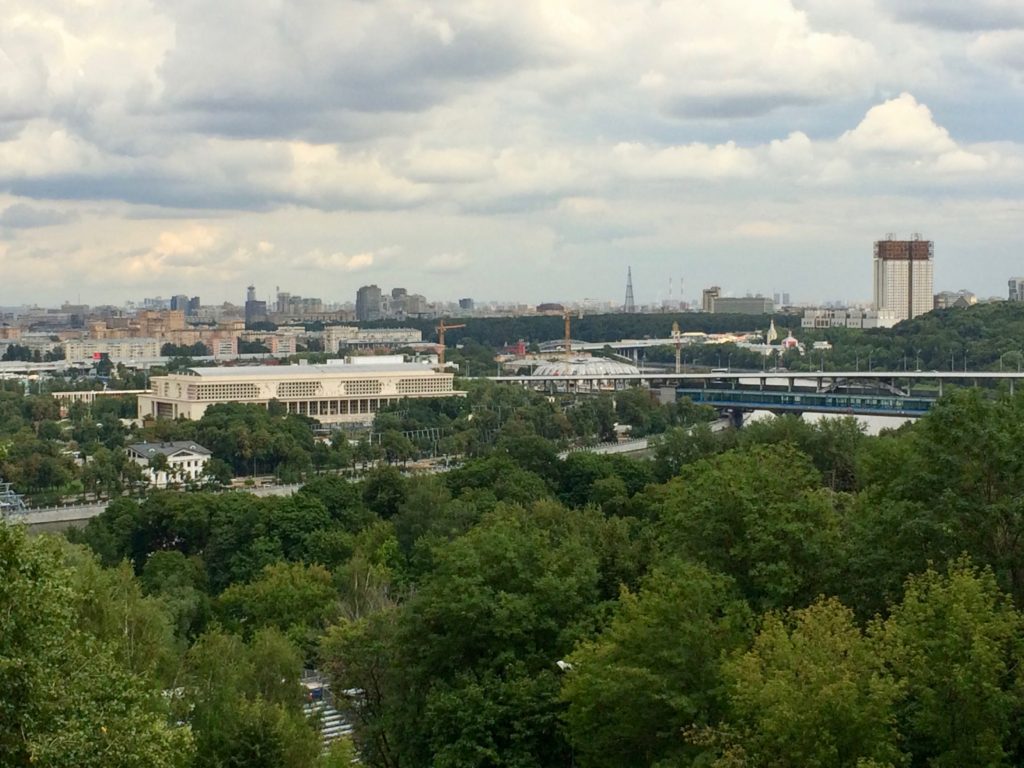
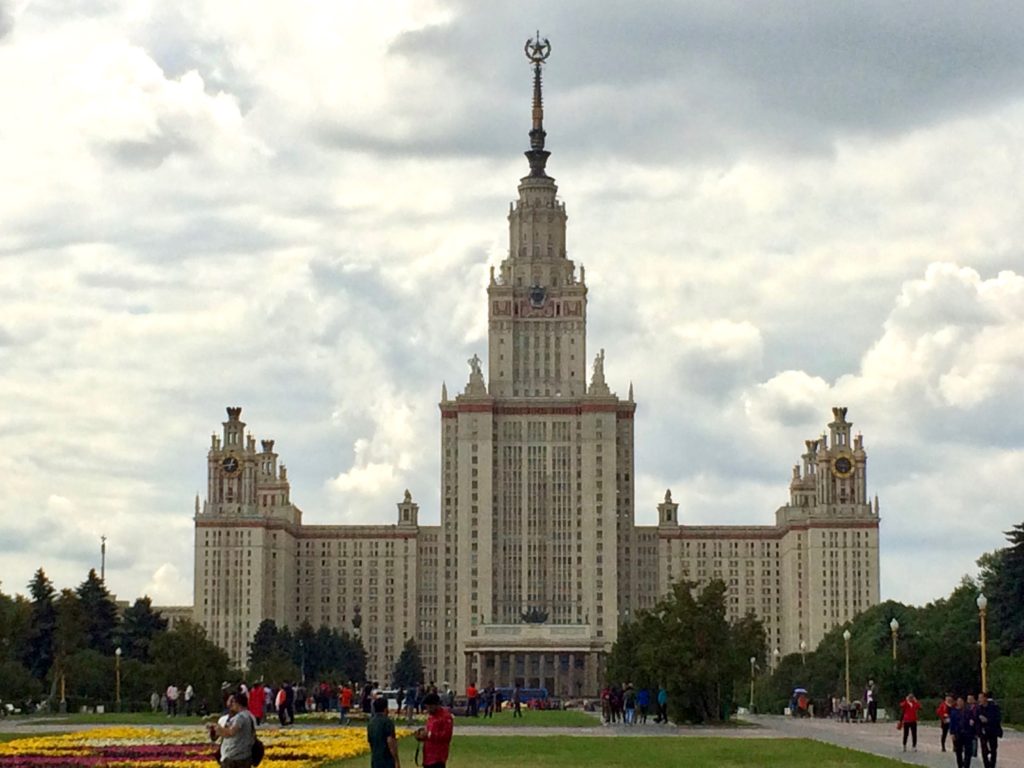
Also located on Sparrow Hills is the main building of Moscow State University, the highest-ranking Russian educational institution, widely considered the most prestigious university in the former Soviet Union. The main building was constructed on orders from Stalin, who had ordered that seven neoclassic towers (also know as Stalin’s Seven Sisters) be built around the city. The MSU main building was the tallest building in the world outside of New York City at the time of its construction and remained the tallest building in Europe until 1990. The central tower, 36 stories tall, is flanked by four huge wings of student and faculty accommodations. Facilities inside the building include a concert hall, theater, museum, library, swimming pool, police station, post office, laundry, beauty salon, cafeterias, bank office, stores, and a bomb shelter. The star at the top of the tower is large enough to include a small room and viewing platform.
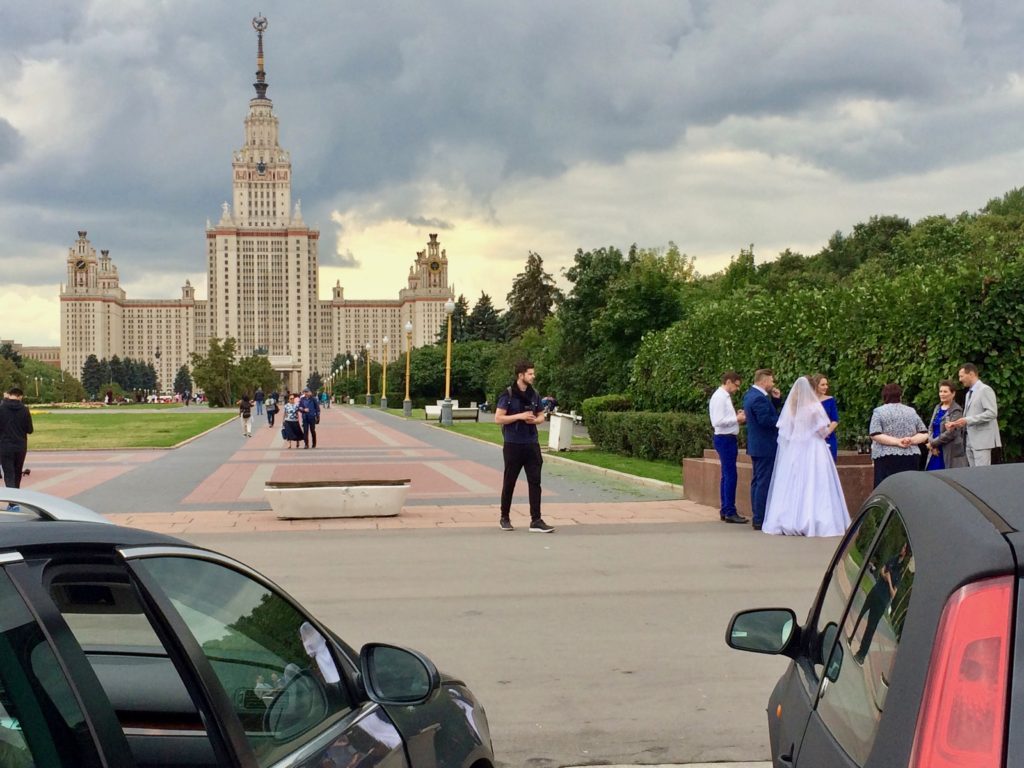
Near the end of our bus tour, we noticed a small wedding party drinking champagne on the university grounds. When my students asked why the wedding party had come to the university, I explained that per Russian tradition, newlyweds, after the wedding ceremony, drive from place to place within the city and have their picture taken at famous sights. The bride also makes a stop to lay her bouquet at the eternal flame, a memorial to those who fell during WWII. Close friends join the newlyweds for these stops around the city, and they toast the bride and groom with champagne at each stop.
On Wednesday, we visited Skolkovo Innovation Center, a research institute and techno-park boasting offices, laboratories, research facilities, etc. A well-known professor, the head of the Cyber-Physical Systems Laboratory at the Skolkovo Institute of Science and Technology, spoke to our group, as did another of the researchers from that laboratory. Students experienced virtual reality in the computer lab and then toured portions of the facility.
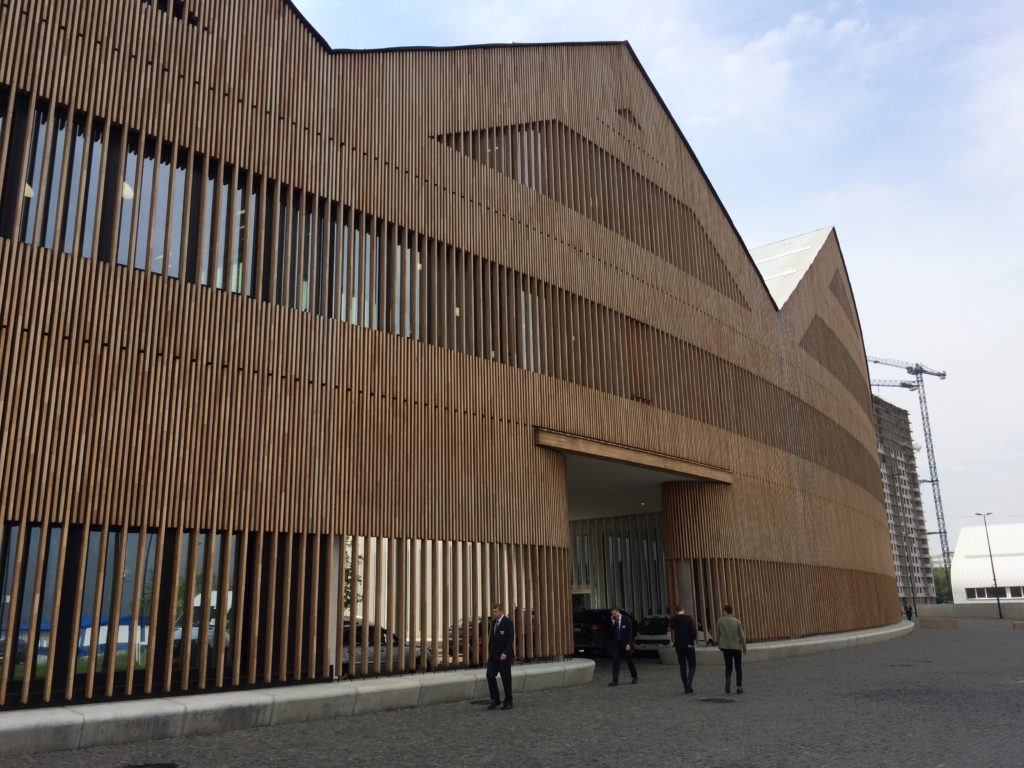
The outside of the building we toured.
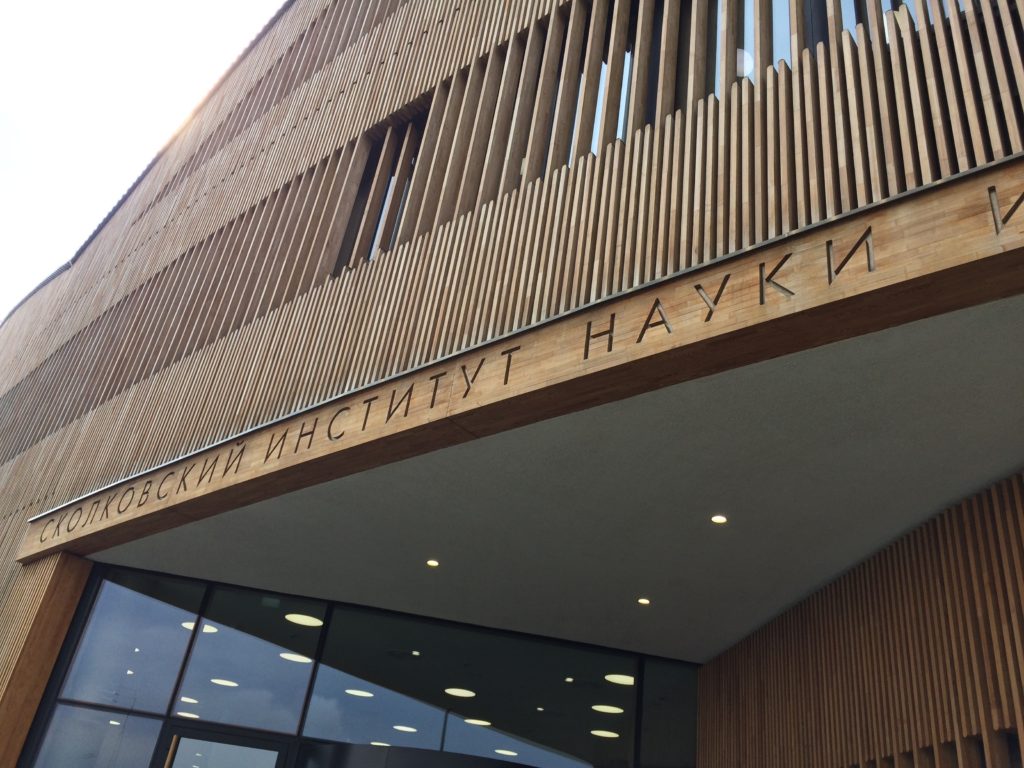
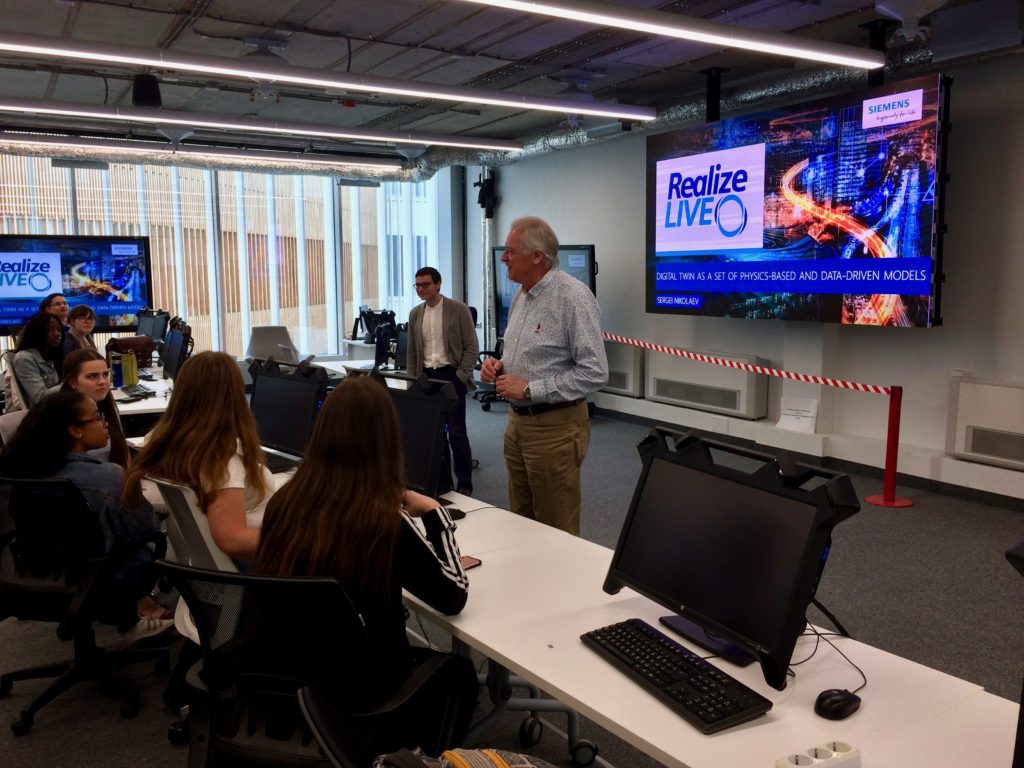
Students listen to a presentation by the head of the Cyber-Physical Systems Laboratory.
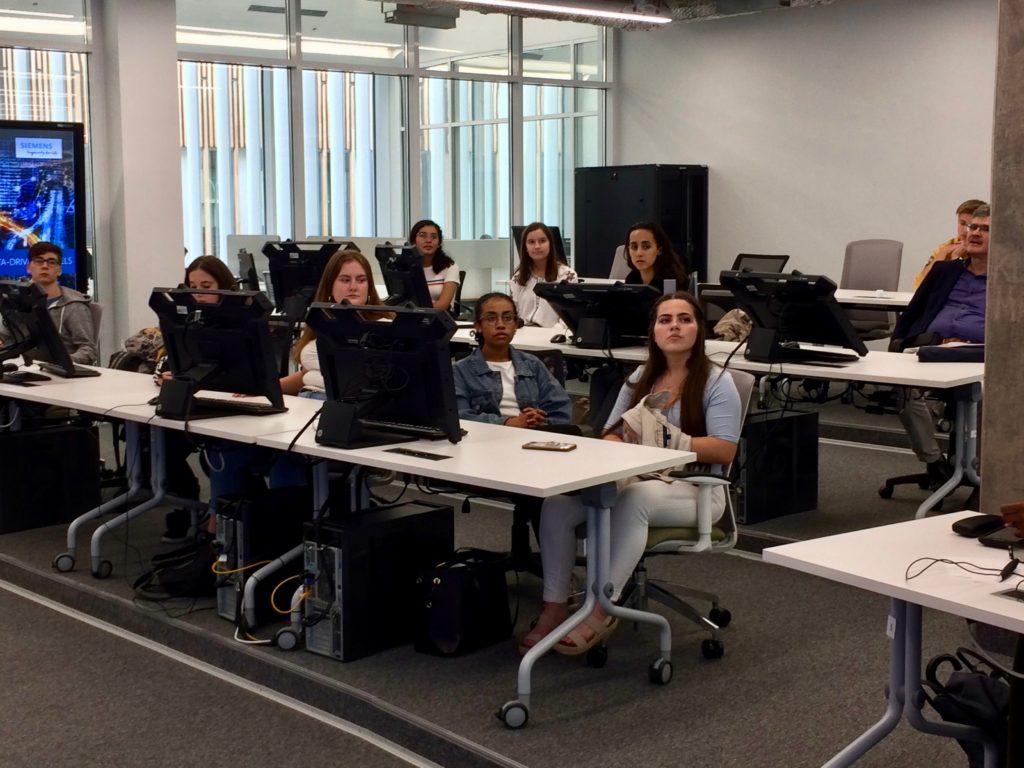
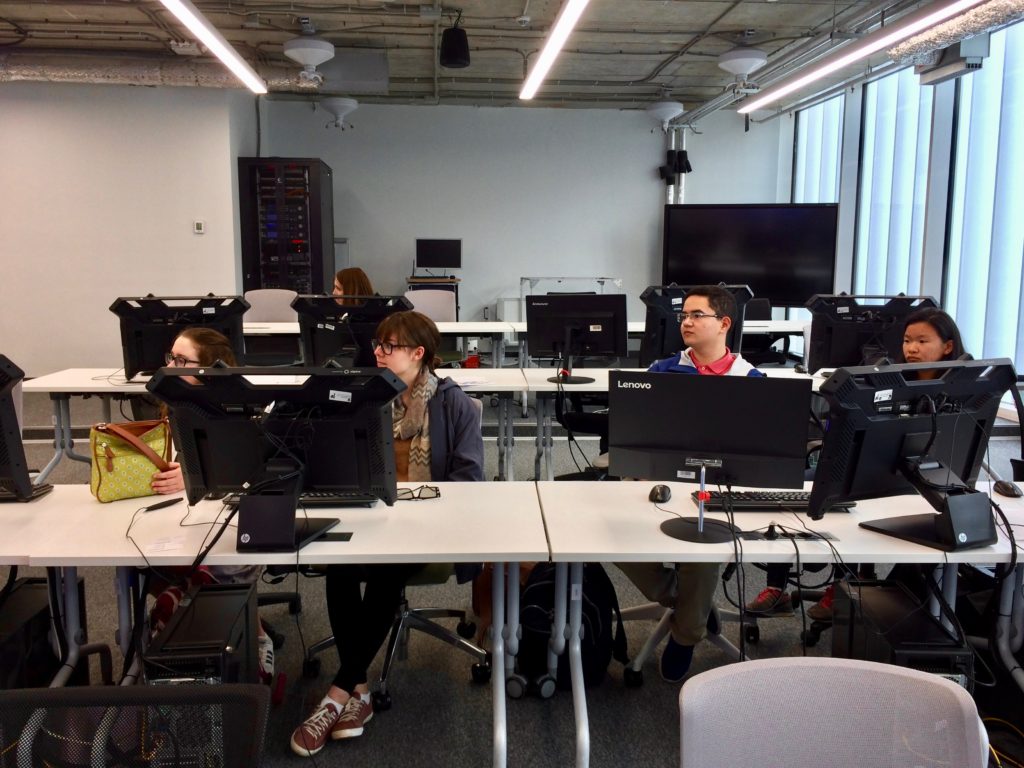
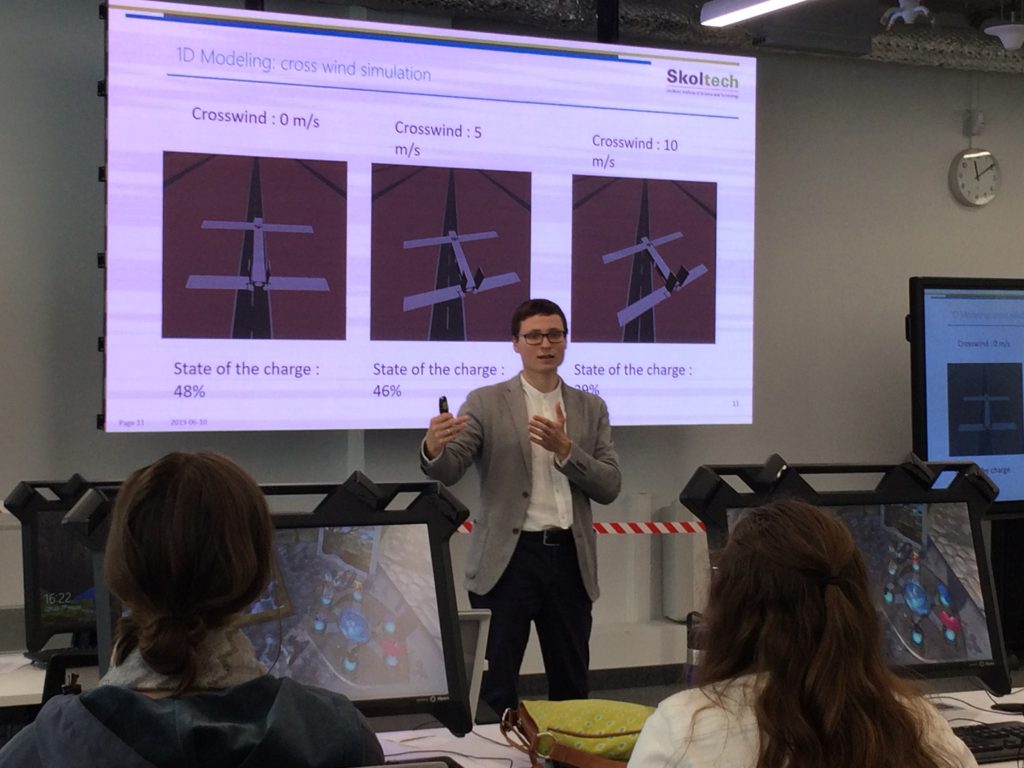
A researcher discusses his work.
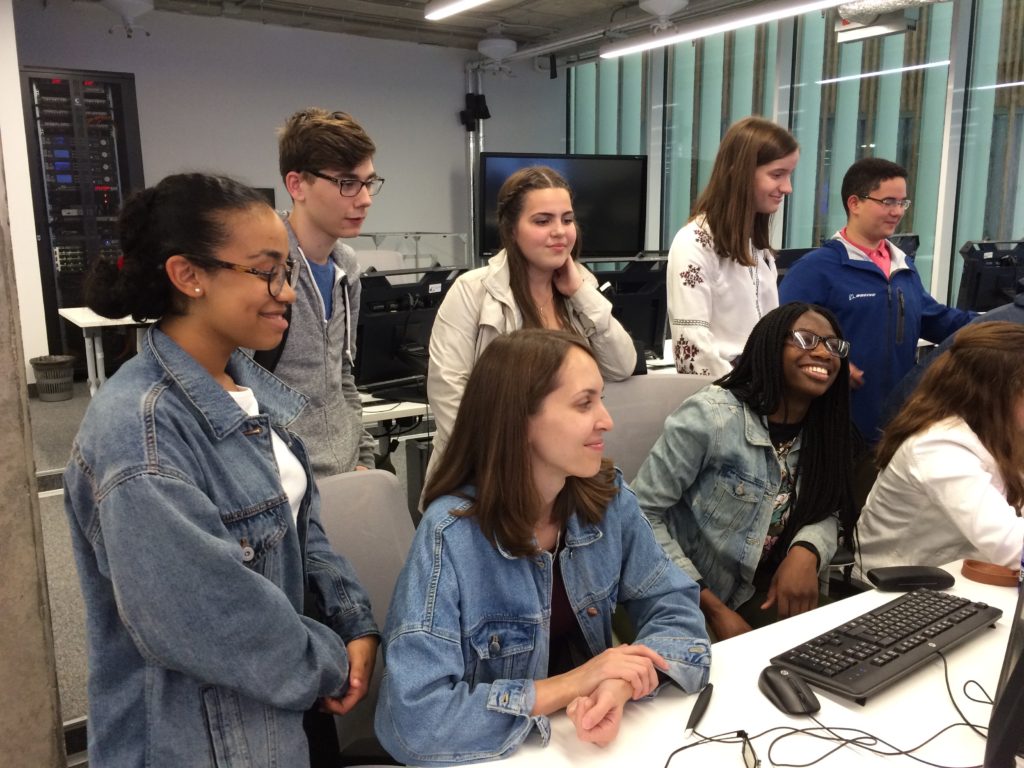
Students experience virtual reality.
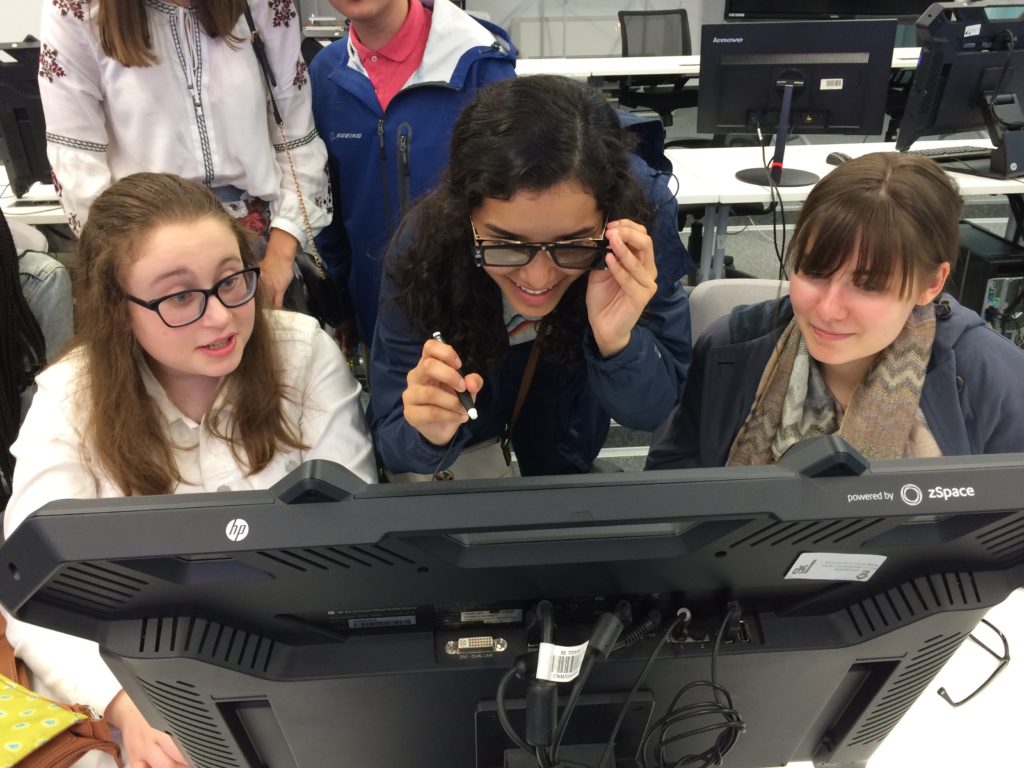
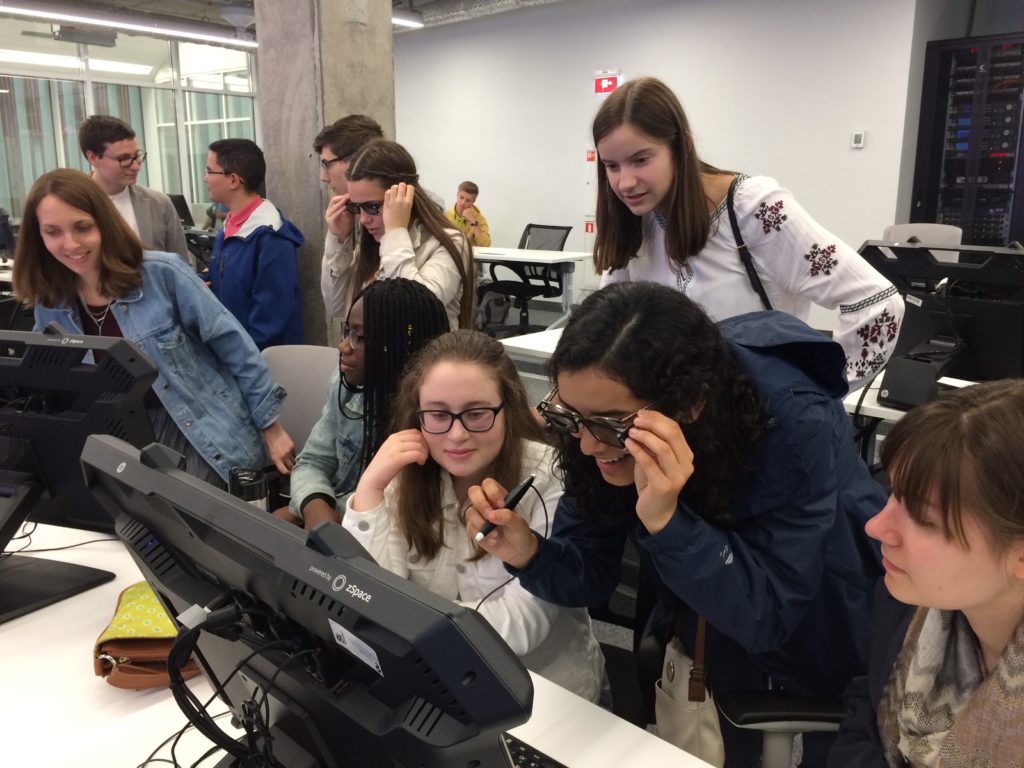
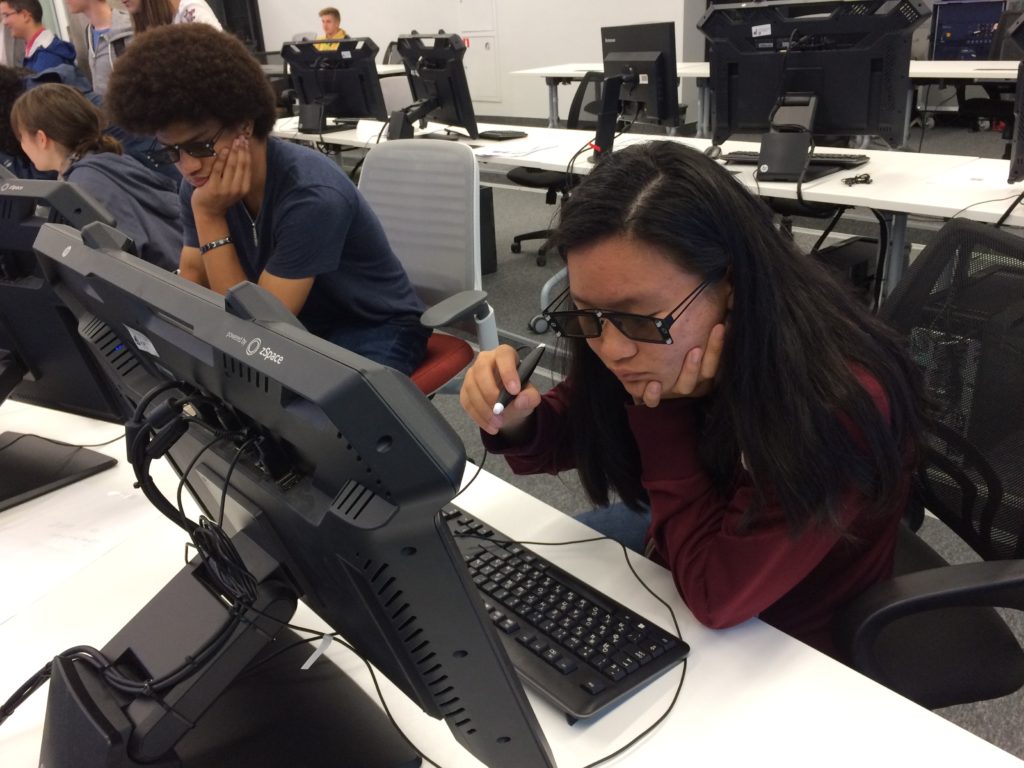
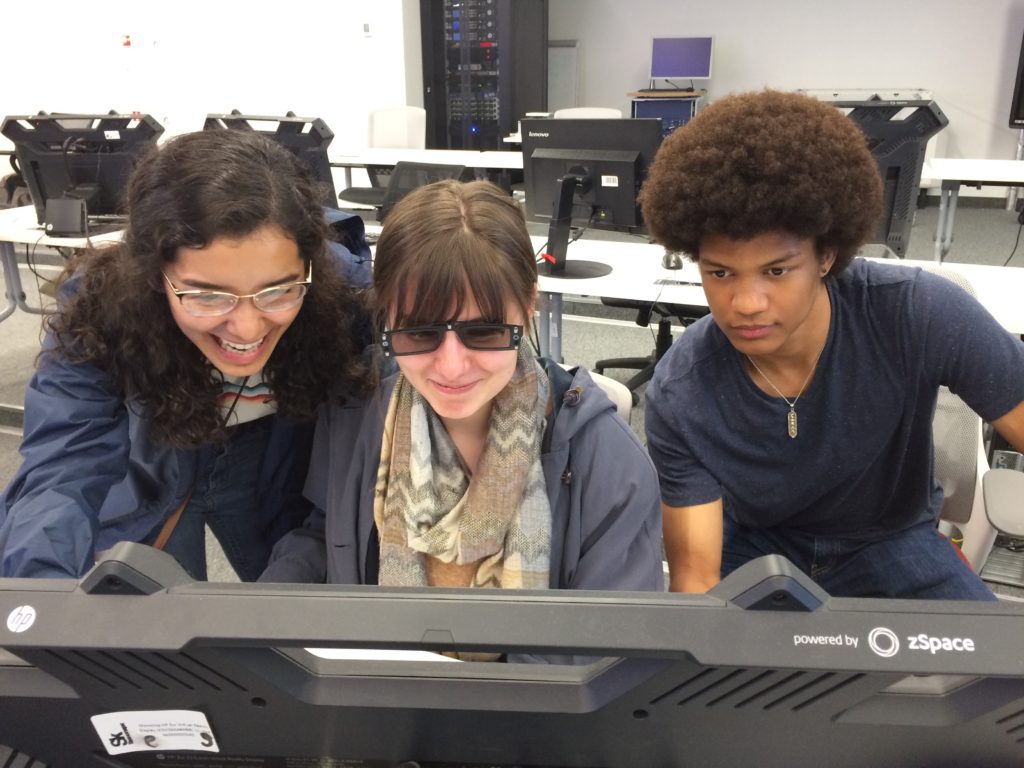
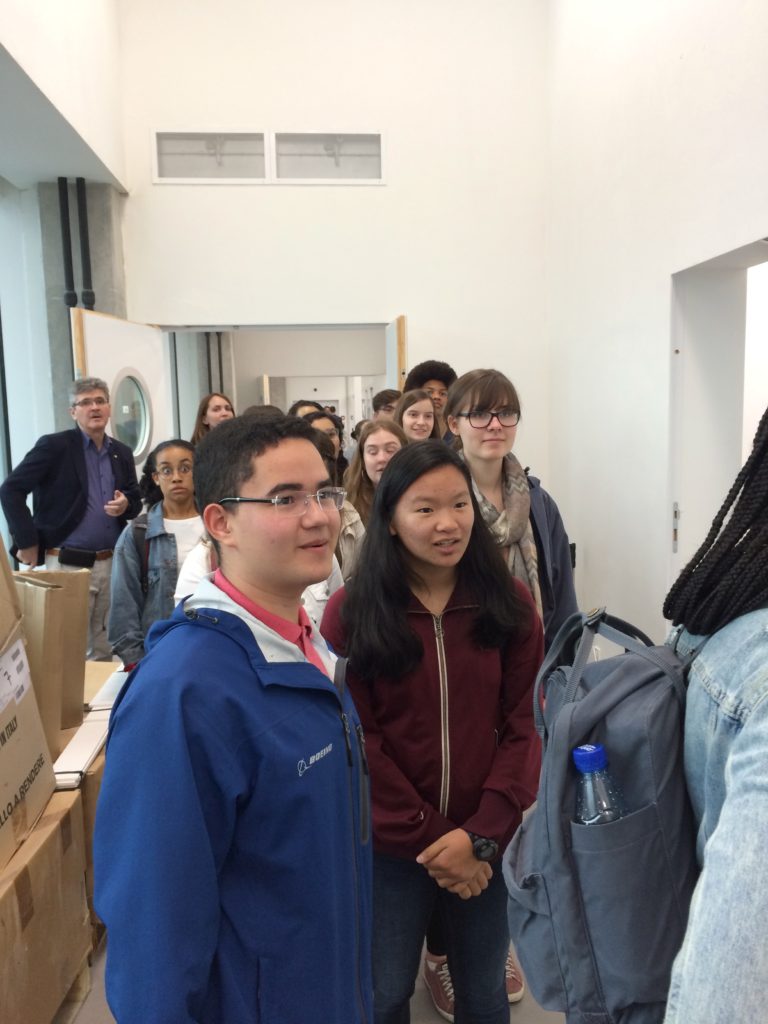
A tour of the facility.
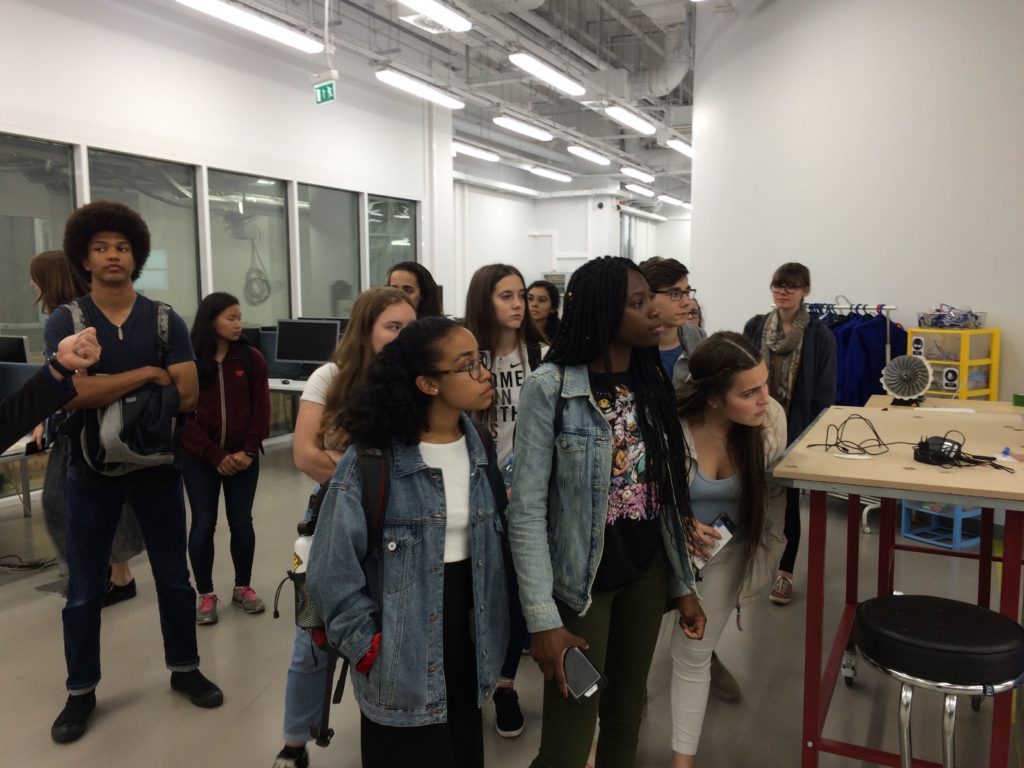
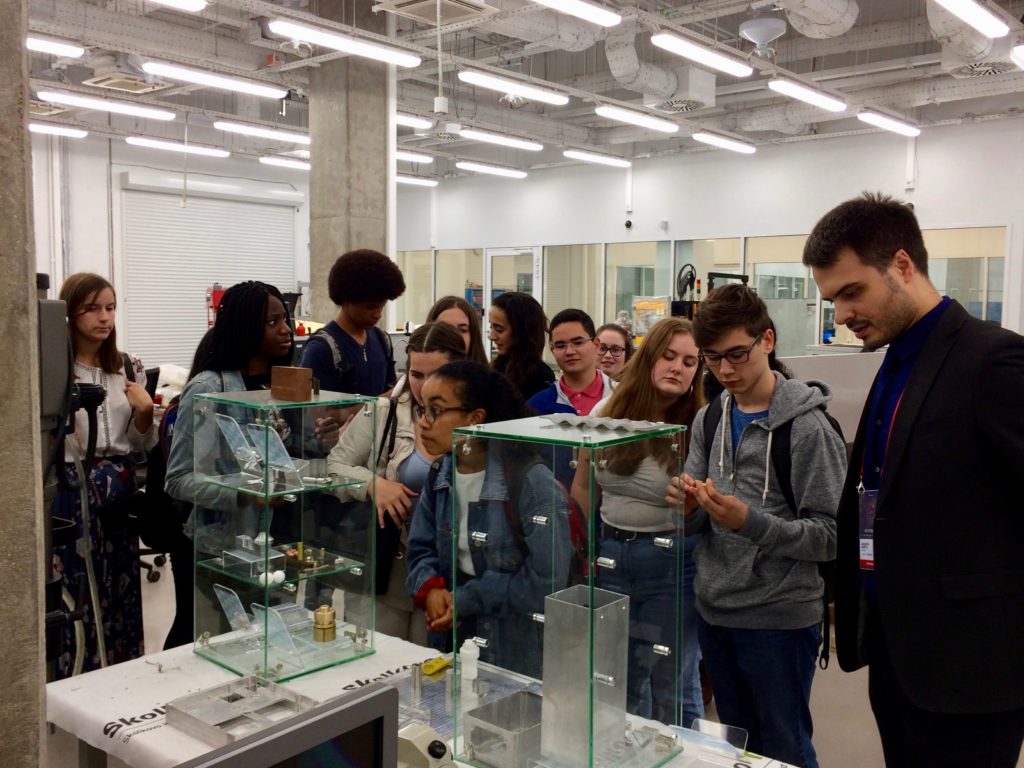
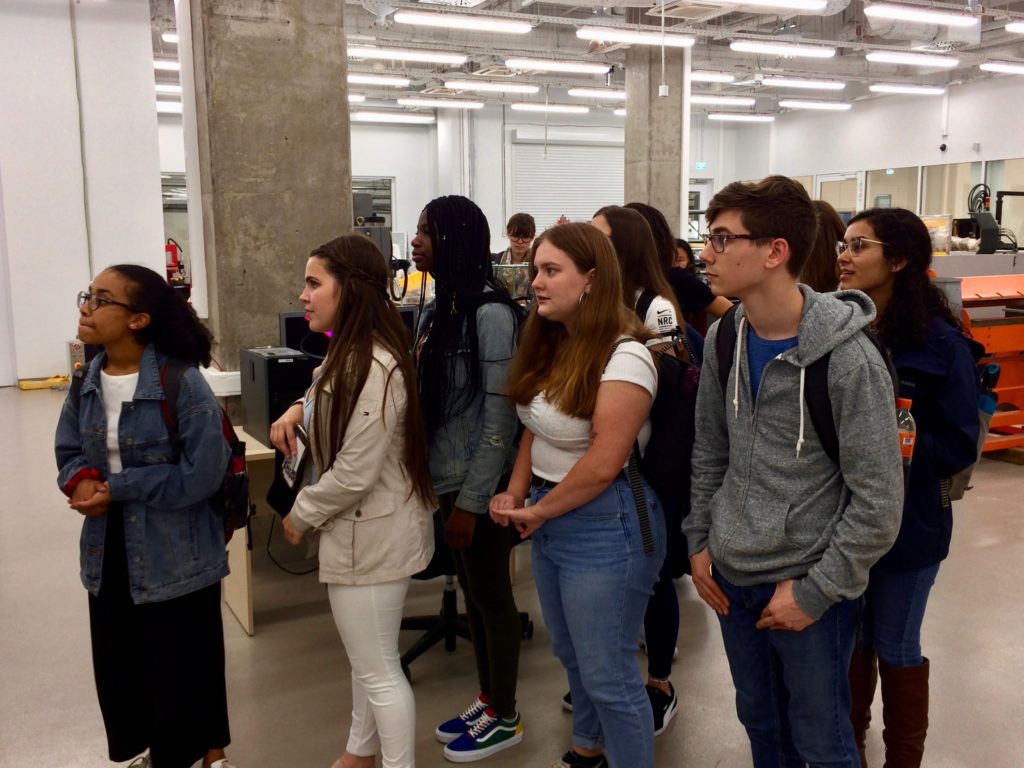
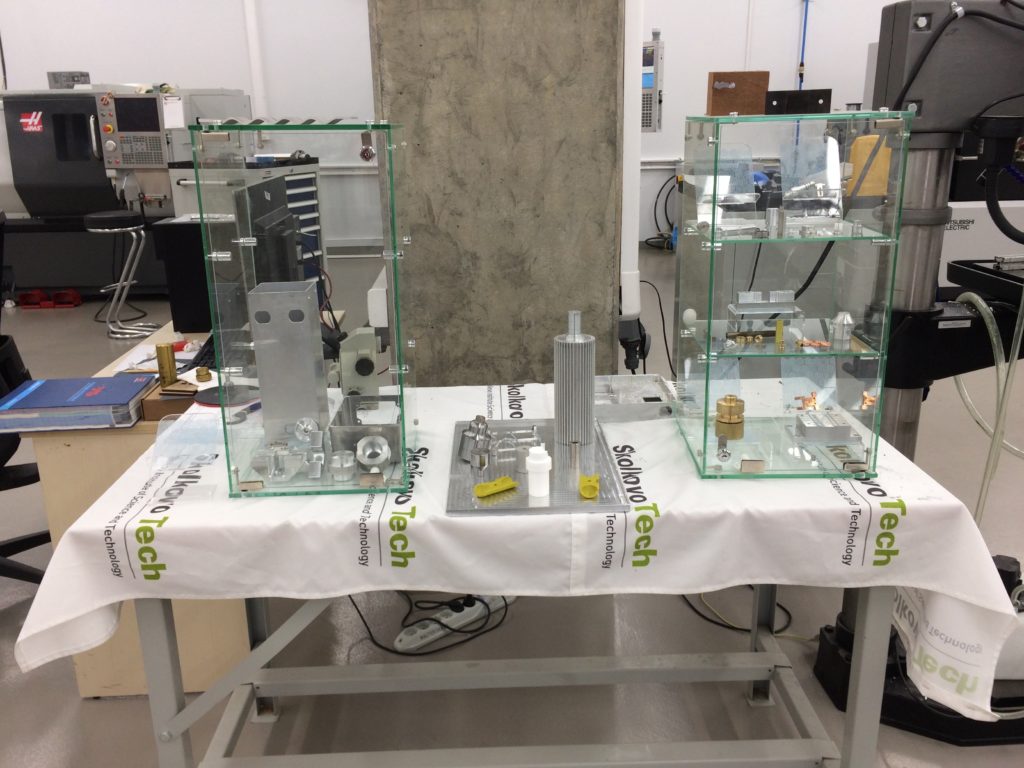
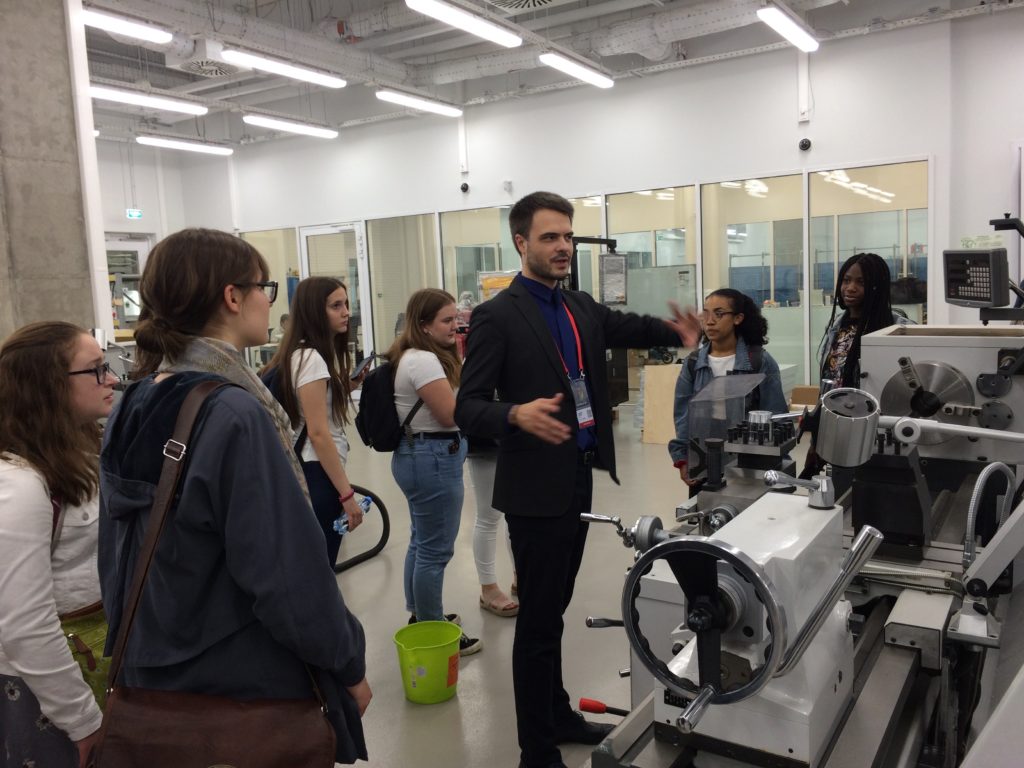
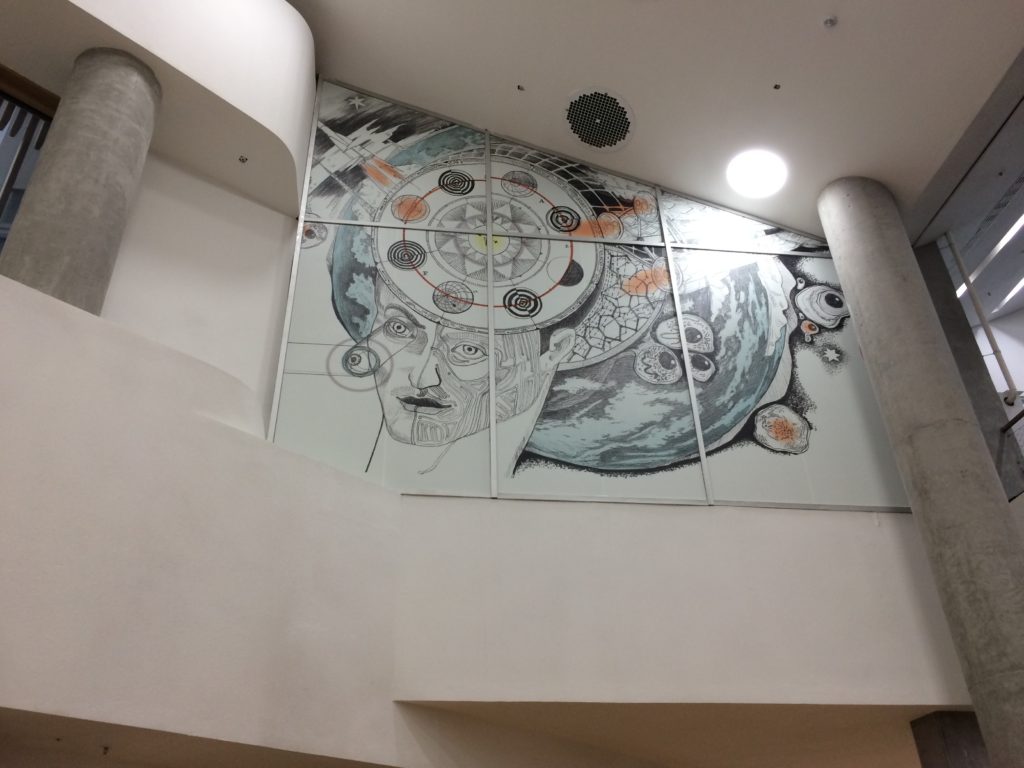
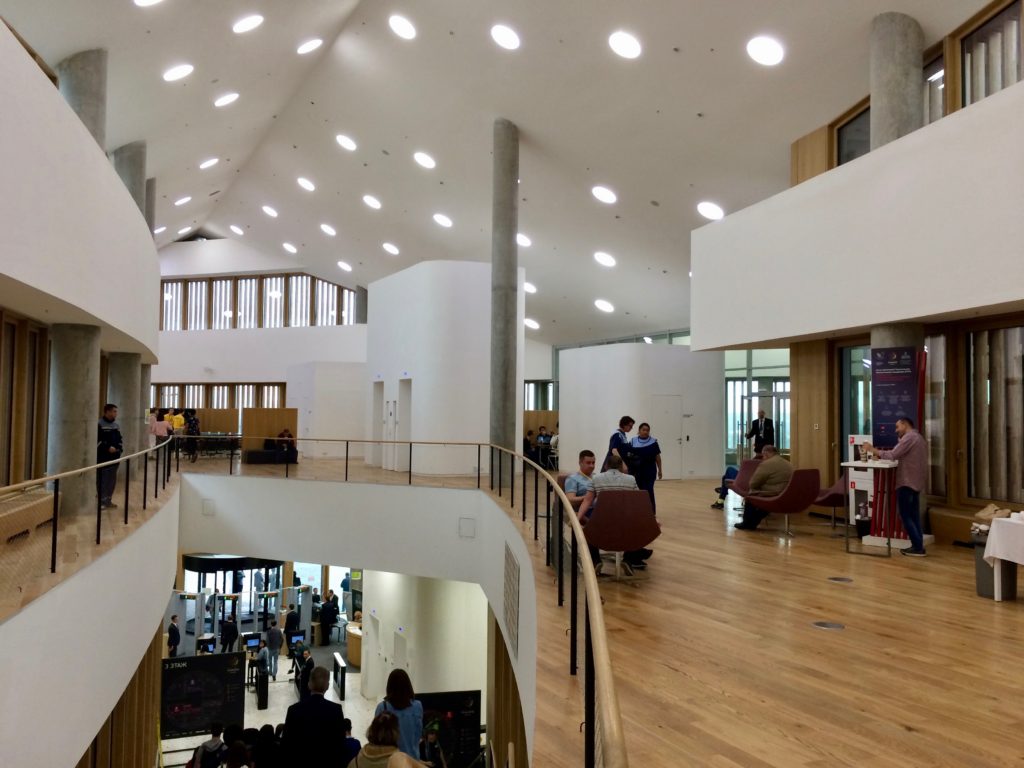
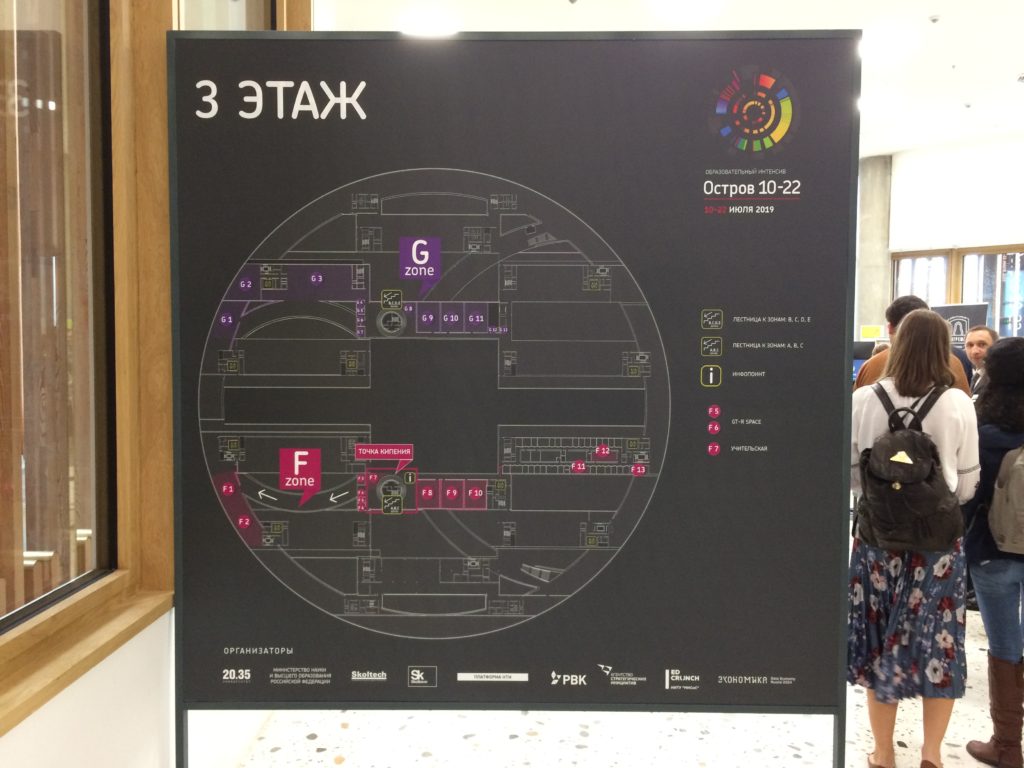
Below are photos of other sights and activities in Moscow this week. We look forward to week four!
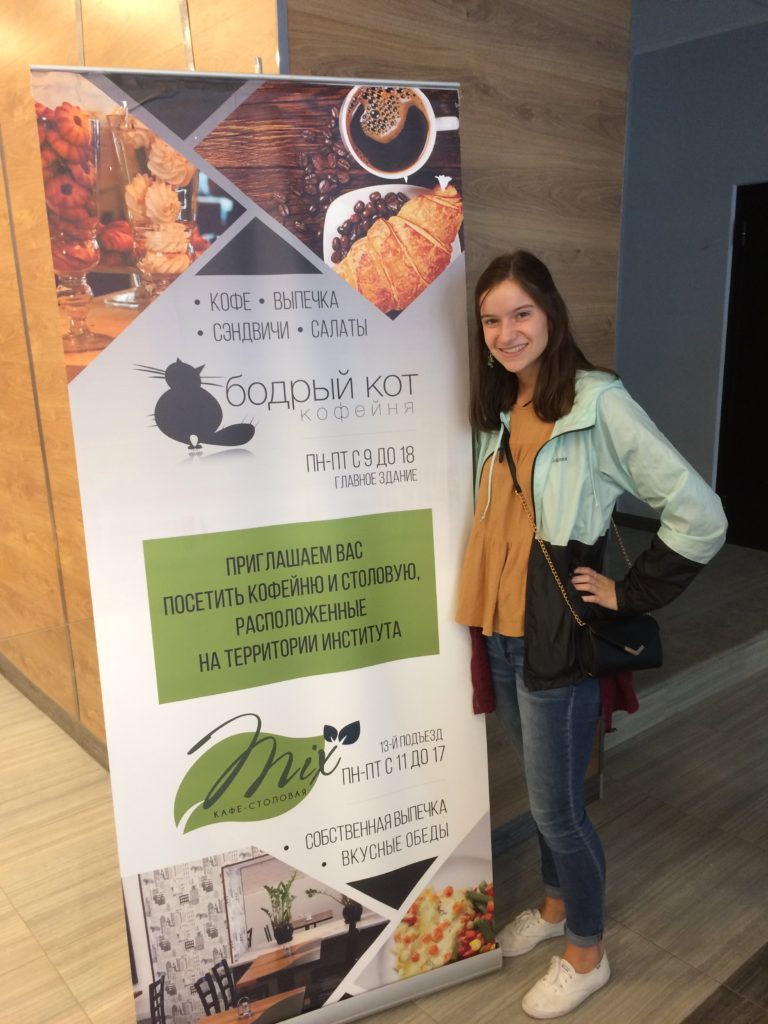
Katie next to an advertisement for the café in our building: The Cheerful Cat.
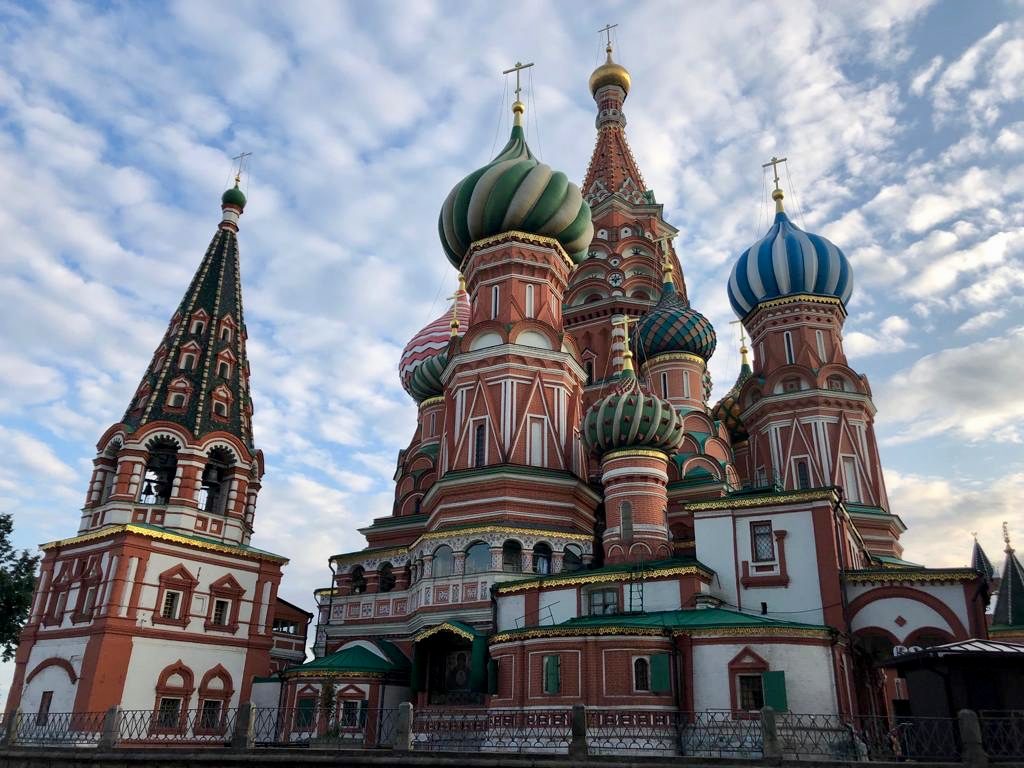
St. Basil’s Cathedral.
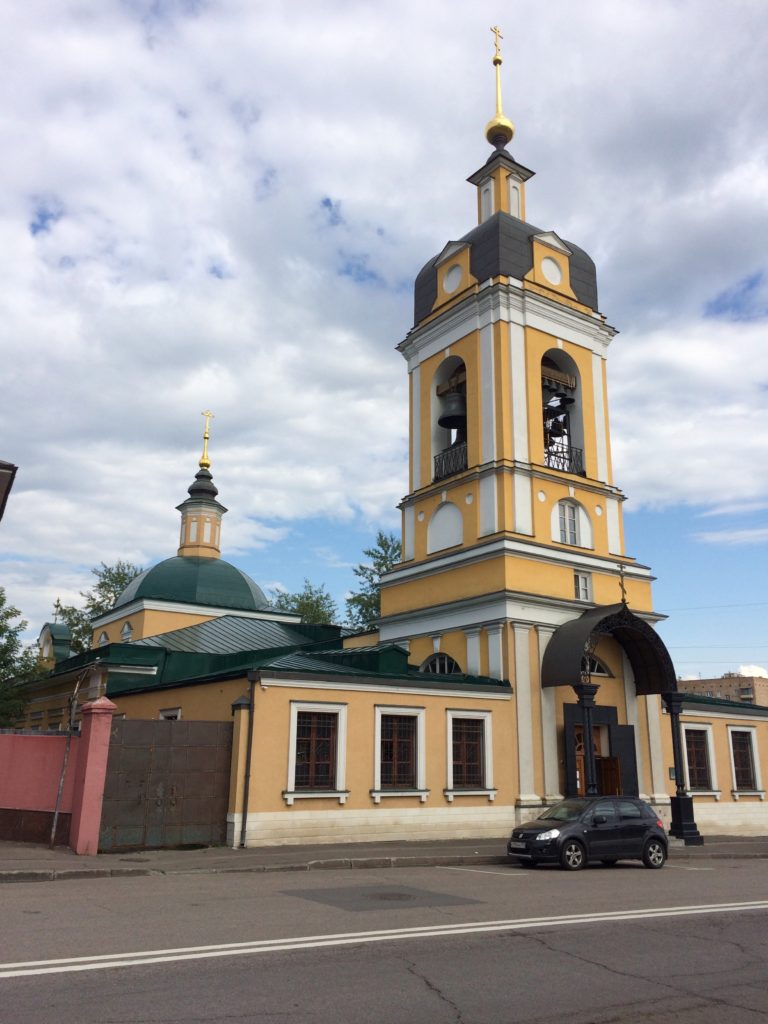
Bell tower of the Church of the Forty Sebastian Martyrs.
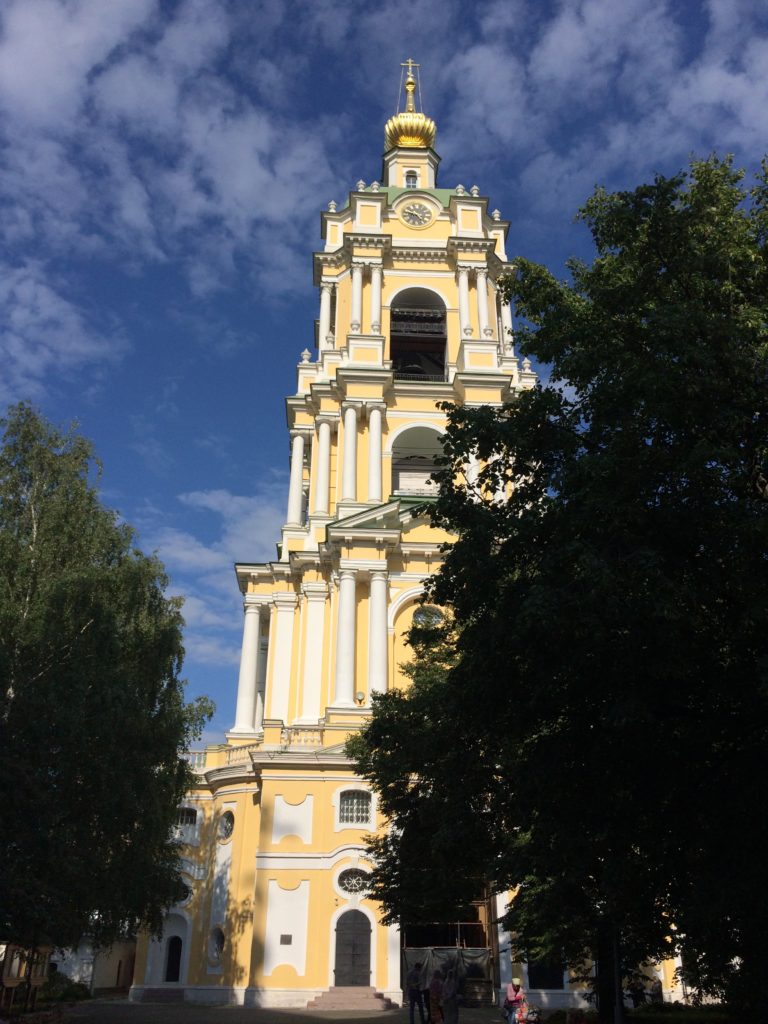
Bell tower at Novospassky Monastery.
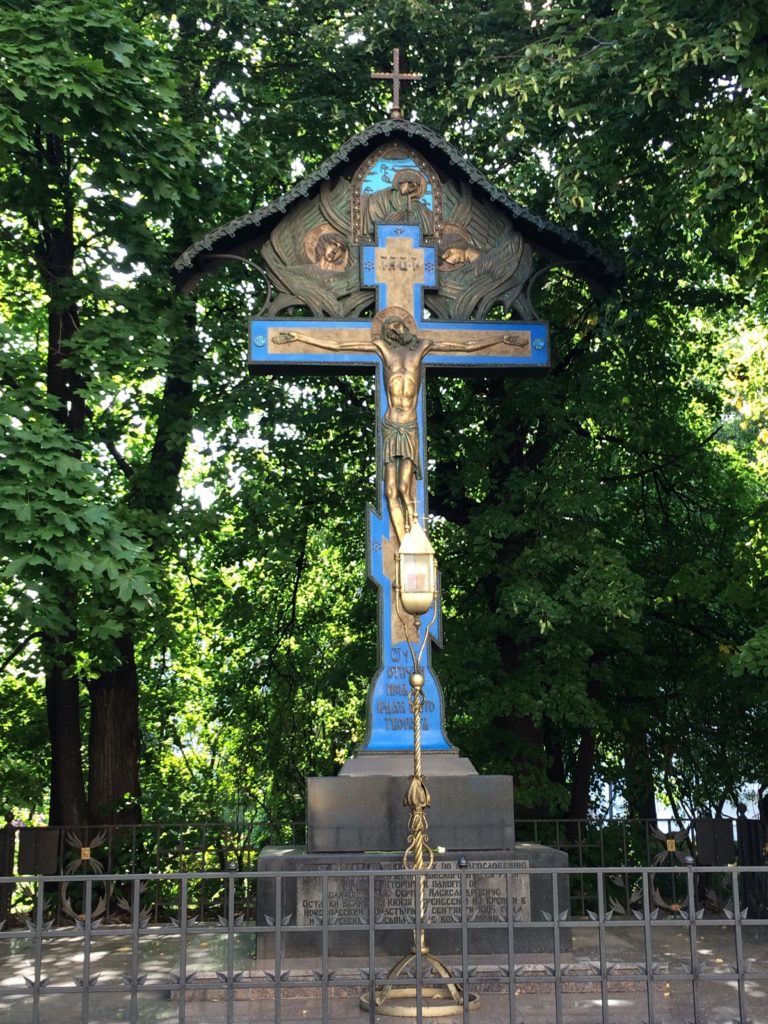
On the territory of the monastery.
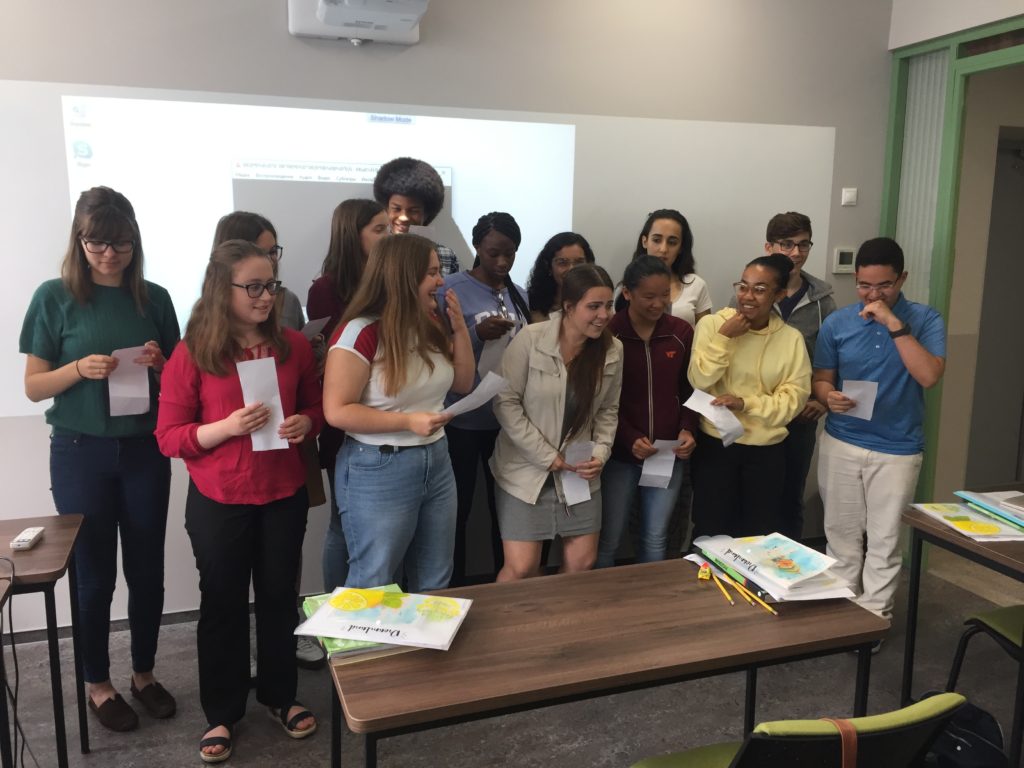
Students sing a song in class.
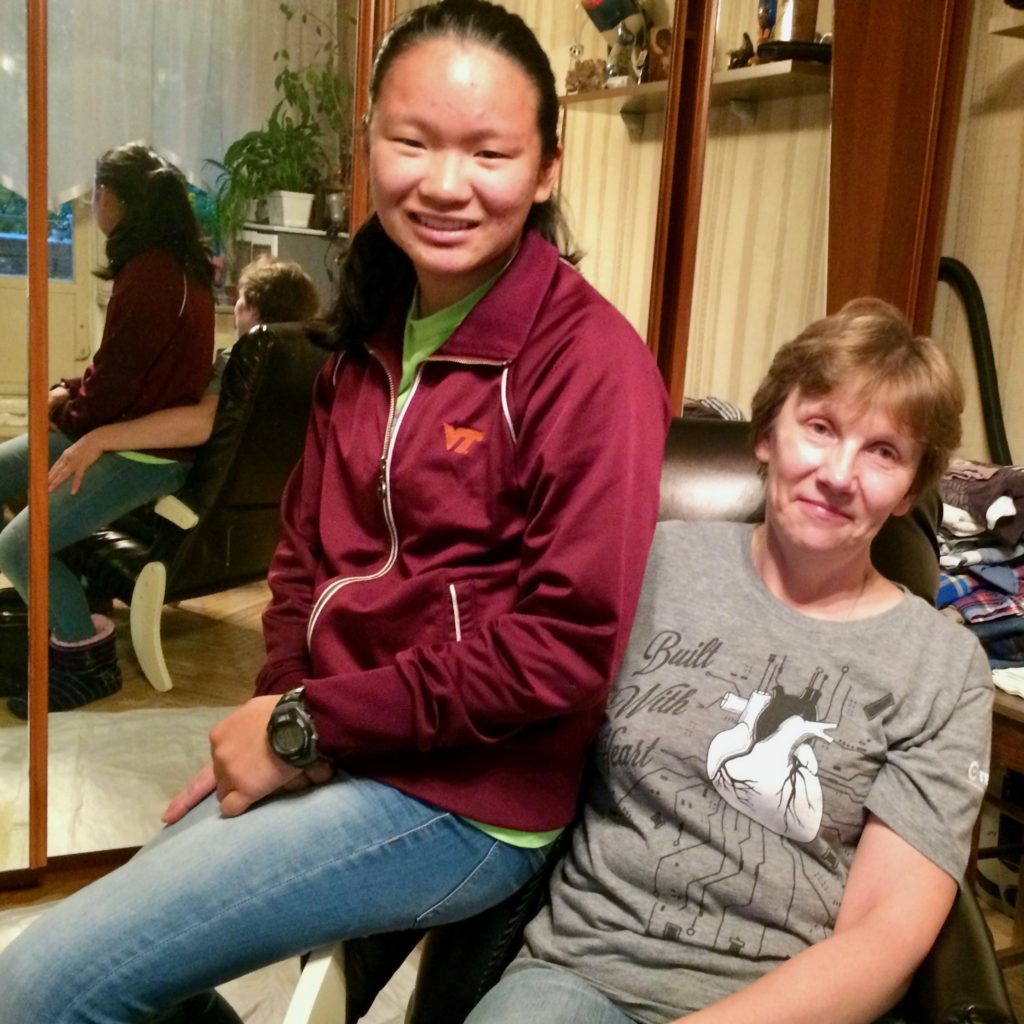
Elizabeth with her host mother.
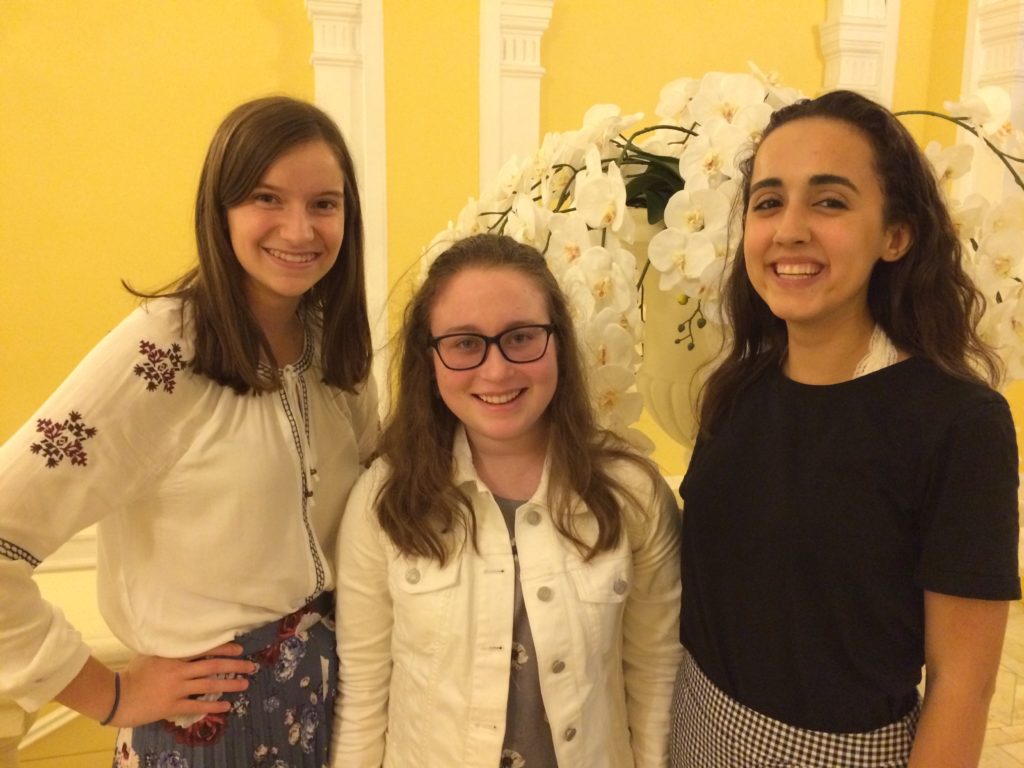
Katie, Erin, and Gabriella at the ballet.
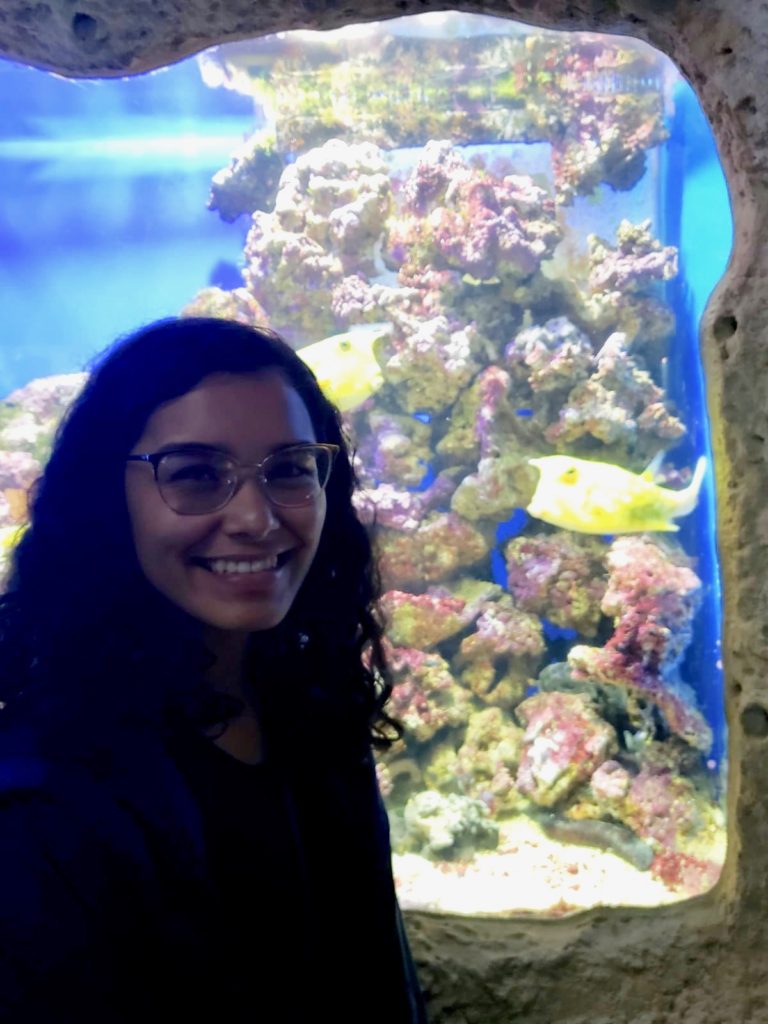
Marilyn at the aquarium.
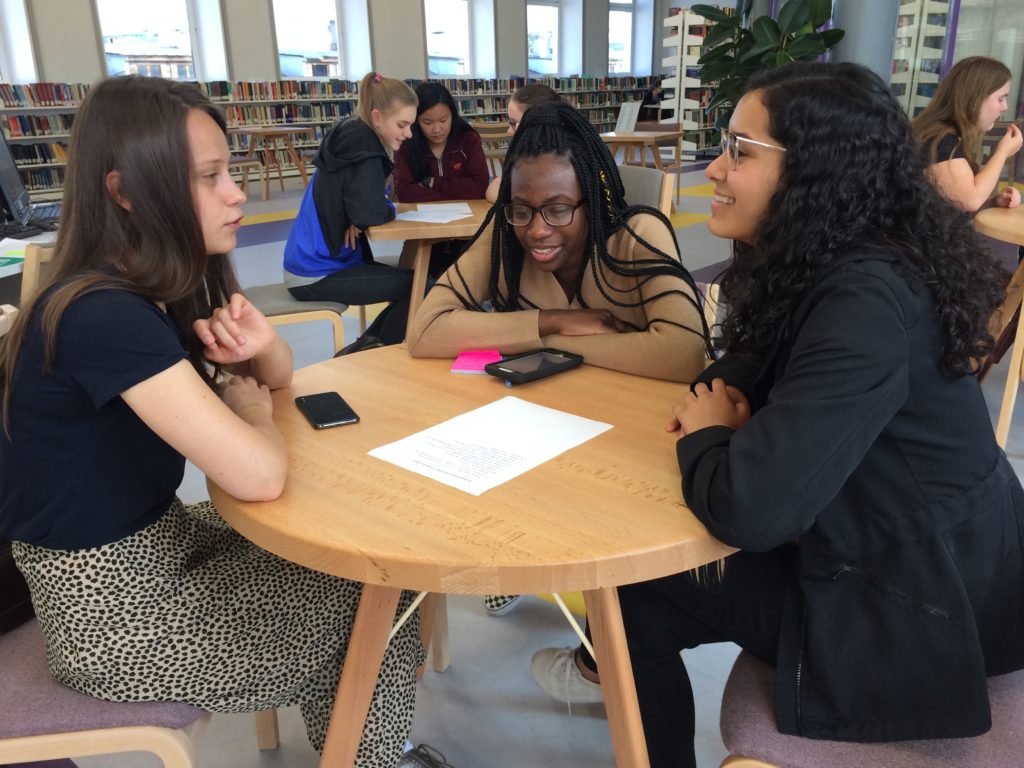
Taina, Marilyn, and a peer language partner practice asking for items at a store.
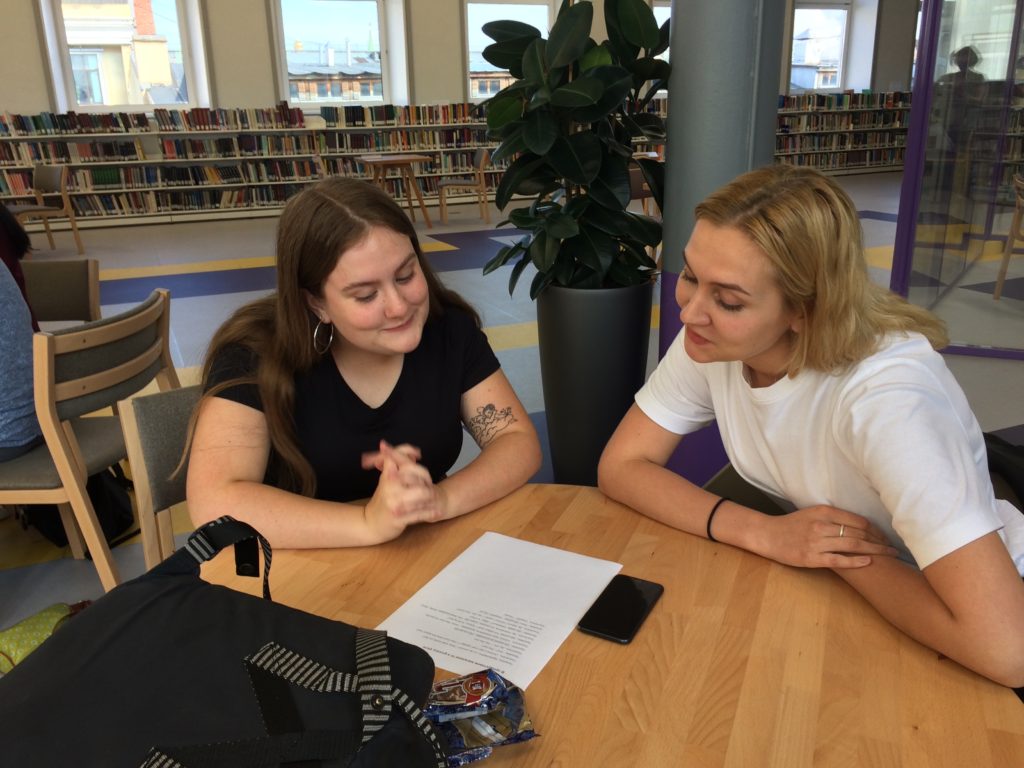
Zoe and her language partner look over a dialog before writing one of their own.
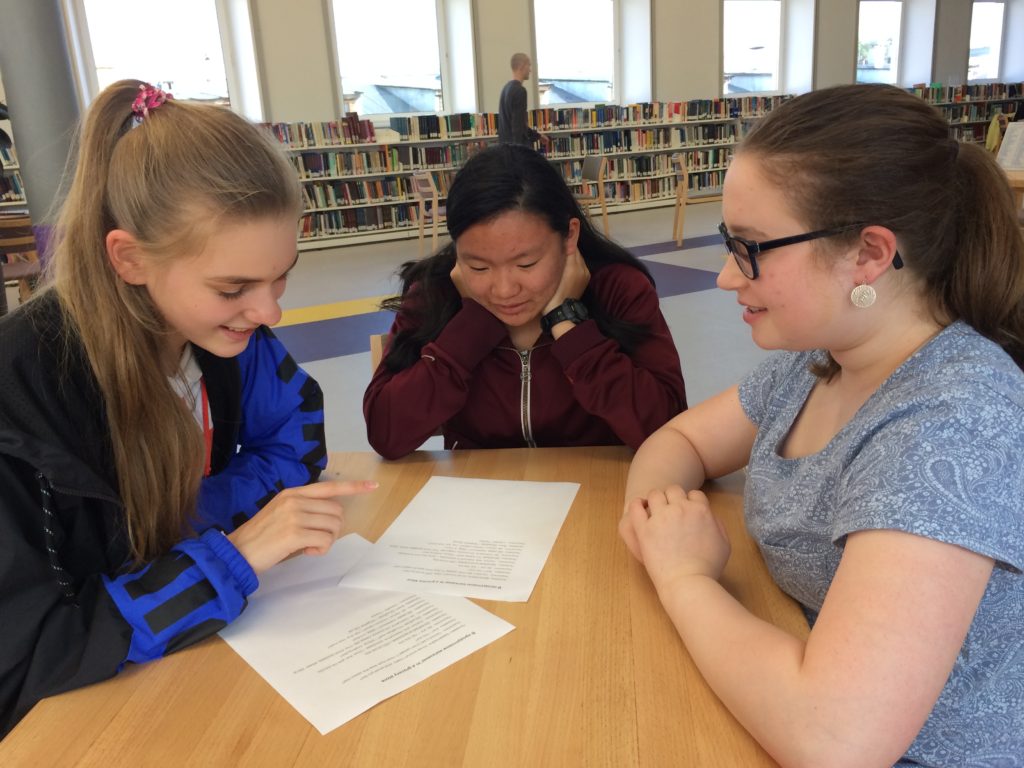
Elizabeth and Erin learn vocabulary needed for going to a store.
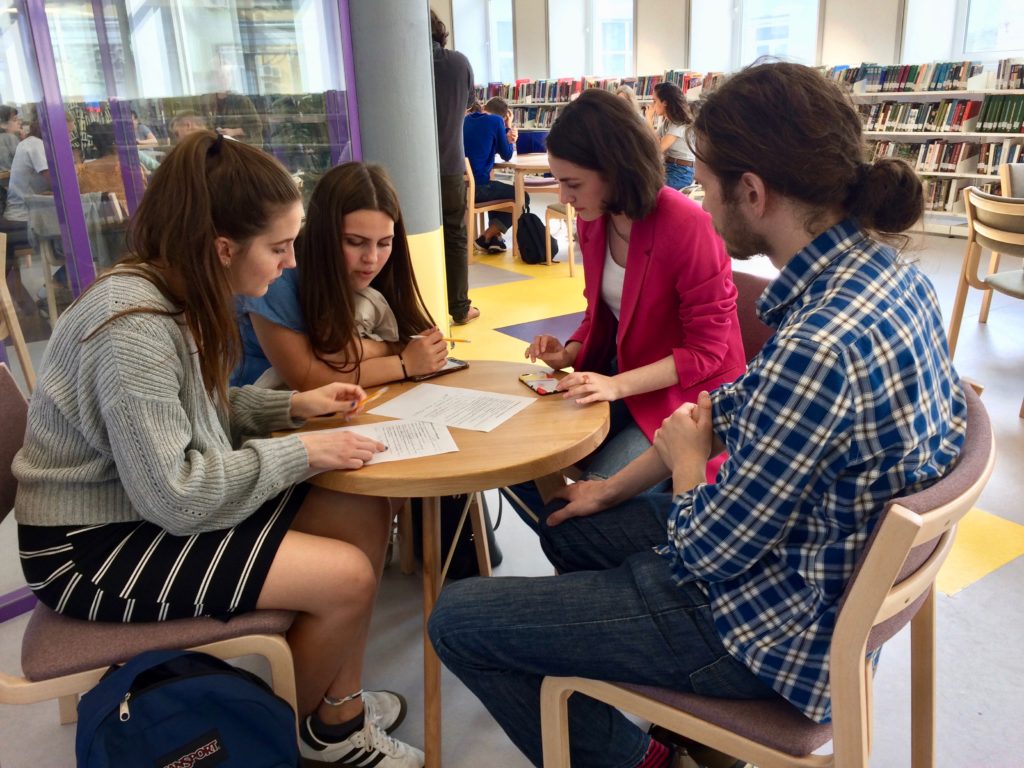
Megan and Ava practice dialogs with their peer language partners.
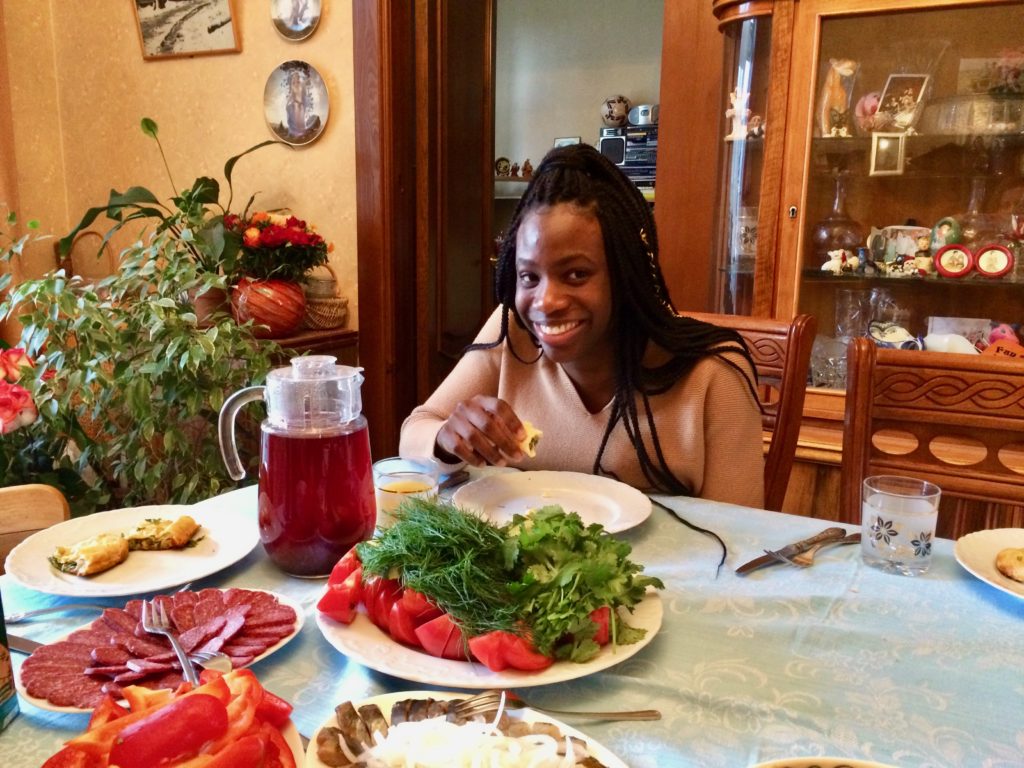
Taina celebrates her host mother’s birthday.
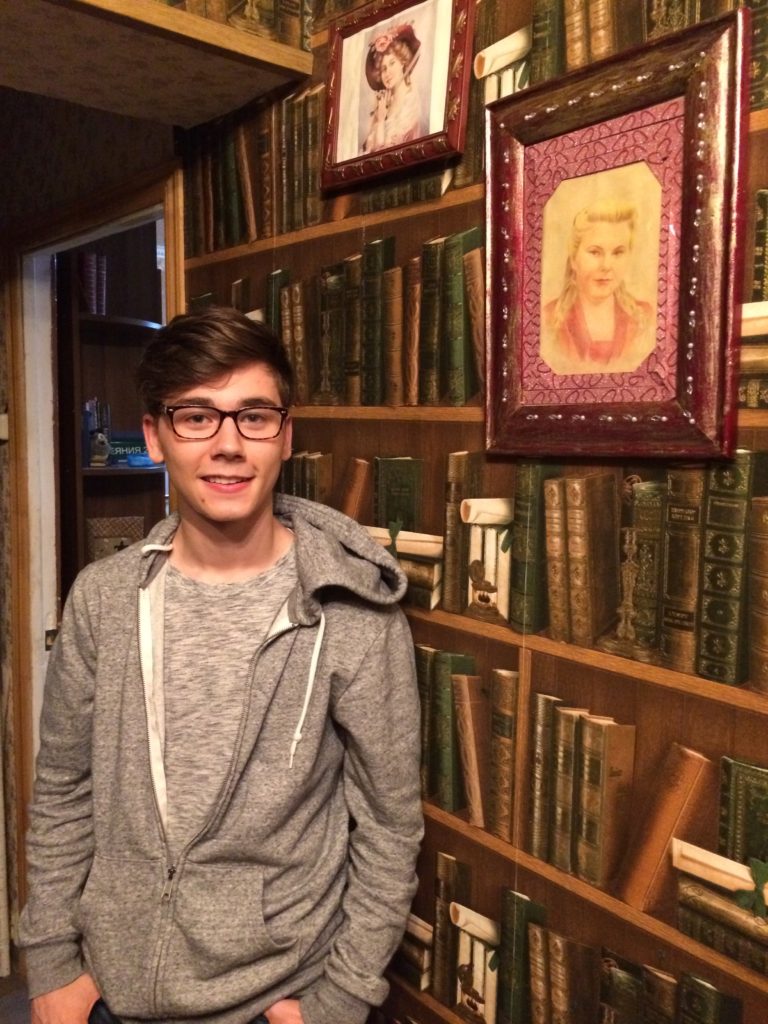
Jake at his host family’s apartment.
